Seiko News March 1961 - Introducing Grand Seiko
Featuring scans of the full publication and an English translation of the article on *the* Grand Seiko
Introduction
Now that I have concluded my series of newsletters on the vintage Grand Seiko references, going forward I will publish occasional newsletters on the history of the brand and references from the vintage period.
In the first of these newsletters, I discuss the introduction of the first Grand Seiko in the March 1961 issue of Seiko News, along with scans of the entire magazine, and a professionally translated English version of the lead article - to the best of my knowledge, the first time this has ever been done.
Seiko News
Commencing in 1957, Seiko produced a magazine that was distributed to their dealers in Japan called “Seiko News”.
For the first two years, there were five issues published each year. Then, in 1959, this was increased to seven, with issues dated for February, May, July, September, October, November and December. From 1960 onwards, it was published every month.
Clearly with the publication moving to a monthly release schedule, it must have been very well received by the dealers, and recognised internally as a great communications tool to keep Seiko’s dealers updated with product and general company news.
In 1965, Seiko News was rebranded as Seiko Sales, with the “Sales” in Japanese, as seen here on the cover of that year’s January issue -
I have been collecting these magazines for as long as I have been collecting vintage Grand Seiko, and now have around 200 separate issues covering the period from 1957 to 1974.
As the primary method of communication to dealers, Seiko News and Seiko Sales contain an absolute goldmine of information about the company and its products from the late 1950’s through to the mid 1970’s. Typical content found within the pages of the magazines would cover new product launches; messages from the Chairman; features on individual shops and their owners; details of Seiko marketing campaigns; advice on in-store merchandising and point of sale material; technical articles; and much much more.
Whilst from 1966 onwards the Seiko Catalogues are the main source for understanding the product offering, prior to that year Seiko News and Seiko Sales are vitally important in establishing factual information about references offered in the range. Additionally, it is often the case that Seiko News and Seiko Sales provide the only contemporary official evidence of nuanced details of watches, such as what the correct buckle is (since in the regular catalogues, buckles are almost never shown).
On the specific subject of buckles, there is a lot of misinformation “out there” provided by various sources, and many watches are being sold these days with the incorrect (more often than not, modern reproduction) buckles. In my view, with the exception of what are clearly NOS full sets of references in the possession of long established collectors, Seiko Sales and News are often the only sources for verifying which buckles are correct for which references. I plan at some point in the future - hopefully before the end of the year - to publish a comprehensive newsletter on this subject.
Before I move onto the core content of this newsletter, we need to take a little diversion…
What exactly is the correct name for the Grand Seiko “First”
Ok, it is way overdue to address this subject.
There are several different terms used to describe the watch featured in this publication. Historically, it has been referred to as “the 3180” (after its movement of course), or “J14070” (after the case reference), and more recently “the Grand Seiko First”. However, at no point during the time it was on sale would it ever have been presented to the public as being called any of these.
Neither the movement nor case number feature anywhere on the watch externally (unlike many other Seiko watches of the period where the case number appears on the outside - rather than inside - of the caseback). Additionally, neither reference number features on anything that accompanied the watch when purchased new - not even the rating certificate mentions the movement number, and neither of the reference numbers appears on any of the swing tags, nor the metal price ticket, nor the manual.
Calling it the “Grand Seiko First” is a relatively new nomenclature, and to my eternal shame I am probably more guilty than most of propagating (in fact I’m possibly even guilty of being responsible for introducing) this horrendously clumsy and grammatically appalling name. “First” here is used adjectivally, and adjectives come before nouns in English, not after them.
Of course it is perfectly reasonable to refer to the watch as the first (no capitalisation) Grand Seiko, for that is exactly what it was. But back in the day, it is very clear that it was simply the Grand Seiko, or the Grand Seiko Chronometer. There was no need to add anything further to that, since there was only one Grand Seiko reference that required identifying with a unique name. It would only have been with the introduction of the second Grand Seiko (the Grand Seiko Self-Dater), that anyone would have needed to come up with a nomenclature to distinguish between the two references.
General reference naming conventions
More generally on naming conventions, it is probably worth just dropping in at this juncture that whilst we almost universally refer to the vintage references by the movement-case number found on the caseback (such as 5722-9990), nobody ever does the same for the modern watches.
I doubt there are more than a handful of people reading this newsletter who would be able to identify off the top of their head which references from the modern era have the movement-case code of 9R65-0AE0, but if I said SBGA011, probably everyone knows what it is.
The reason for this is pretty simple. In the modern era, the catalogues (and for most, that means the websites) refer to the references by their catalogue number, not their movement-case codes. Everyone has access to them, and so that’s how we refer to the watches. But, both now and in the vintage era, the catalogue codes appear nowhere on the watches themselves.
It is only in relatively recent years that the people such as myself and Anthony Kable of Plus9Time have uploaded scans of the catalogues from the vintage Grand Seiko era - prior to this, it simply wasn’t common knowledge what the catalogue codes of the vintage era even were, and so it became generally established that we refer to the vintage watches by the visible movement-case reference on the caseback.
Seiko News - March 1961
Of all the issues of Seiko News and Sales published over the years, for anyone interested in vintage Grand Seiko, there can be no arguing that the March 1961 issue is the most exciting and important - and for obvious reasons.
The Grand Seiko was launched to the public on December 18th 1960, with production of the watch having started 8 months previously in April. It is therefore interesting to note that Seiko waited until a few months after the launch to cover the watch in Seiko News.
Clearly there must have been some earlier introduction of the watch to the dealer network, but this is the very first mention of Grand Seiko in a Seiko News magazine.
As seen in the above scan, the cover of Seiko News featured a photograph of the watch in its box, with the swing tags and metal price ticket also clearly visible. Featuring most prominently in the photo is the rating certificate that recorded the chronometric performance of the watch itself (as is clear from photographs in a later issue of Seiko News that I will share in a subsequent newsletter, the movement was tested fully cased up).
The box shown on the front cover was the first of two that were used for the Grand Seiko. It is extremely rare indeed - I know of fewer than half a dozen surviving examples of the inner box, and have in my collection the only known surviving example of the first Grand Seiko as a full set complete with the original inner and outer boxes. A while back I had a little fun attempting to recreate the Seiko News cover photo with my own set -
The image on the cover of Seiko News actually extends onto the back cover as well, so it’s worth sharing a scan of the covers with the magazine opened -
Turning to the inside pages of the magazine, we are first presented with a “lifestyle” photo that no doubt today would not be acceptable, along with high level watch specifications, and an index to the full magazine.
Before moving on to the translation, there are a couple of very interesting things to call out at this point.
Firstly, there was I believe for many years a lot of confusion as to what the correct crown was for the first Grand Seiko. If you look carefully at the front cover photo, it is very evident that the crown shown on the watch is not the one that people traditionally would view as being correct for the reference -
This is a perfect example of why these magazines are so important when we want to verify details such as this. Without this cover image, I don’t believe anyone would have ever realised that a crown such as the one shown here would be legitimate for the first Grand Seiko - or at least, the early examples of the reference.
But when we look inside the publication, we are hit with an immediate problem - the crown on the watch shown on the first page (as a Japanese publication, the spine of the magazine is on the right when closed, and so when opened, the right hand page is read prior to the left hand one) is not the same as the one on the cover!
There are two other odd things about this image that I only noticed during the course of writing this article. The buckle is plain, and take a close look at the “key” swing tag on the right - notice anything odd? The “s” in “seiko” is in lower case!
This latter detail surprised me so much I thought it must be an error on behalf of the draftsman (I’m 100% confident that the image shown here is actually a drawing, and not a photograph). But no - if you go back and look carefully at the swing tag shown on the front cover, it too has the “s” in lower case (as does the actual swing tag in my set).
Ok, let’s take a look at the pages individually, and I will provide the English translation of the Japanese text.
Page 2
The text above are rather dapper - if these days politically incorrect - smoker translates to “New Product Introduction”
Page 3
“スイスの国産最高級品へ挑戦する
国産最高級品”
Translation -
“Challenging Switzerland’s finest domestic products
The finest domestic products”
It is fascinating to see how forthright and direct this statement is. Right off the bat, Seiko lay down the intent behind the creation of the Grand Seiko brand - to beat the Swiss at their own game. Can you imagine the modern company being so bold in their headline marketing statements?!
Below this opening salvo we see presented Grand Seiko both in Japanese (グランドセイコー) and English, and there then follows some top-line technical detail - including one fascinating measure that is rarely discussed these days.
“機械外径28mm 機械落径27.6mm、厚み4.4mm”
Translation -
“Movement outer diameter 28mm, movement drop diameter 27.6mm, thickness 4.4mm”
I’m not entirely sure of the difference between the first two movement diameters mentioned here - if anyone can provide the technical detail behind this, please do comment below.
Next -
“テンプ慣性能率 3500mg-mm 、 石数 25石”
Translation -
“Balance inertia efficiency 3500 mg-mm, number of jewels 25”
The jewel count is of course self-explanatory, but the balance inertia efficiency might need a bit of explaining. Whilst there is a very good article over on SJX on this subject, I have to profess to not being entirely sure how one would convert the 3500 mg/mm stated here, to what would appear to be the more common measure of mg/cm2 in the table in the article linked to. The fact that the dimensional measure (weight/distance vs weight/distance^2) is different is rather odd - there is possibly some mistake here.
Underneath these details is written “ダイヤショック、 ダイヤフレックス、ダイヤフィックス付”, which translates to “Equipped with Diashock, Diaflex, and Diafix”.
Finally at the bottom of the page we find the table of contents for the magazine. I won’t bother to replicate the Japanese here, but it translates to -
“Table of Contents
New Product Introduction
Grand Seiko - 2~5
Introduction of new quartz watches - 6~7
Factory introduction
Daini Seikosha - 8〜9
Customer Service (below): 10~11
Spring Window - 12~13
Introduction to Watches and Clocks Series NO.1: Size, material and structure - 14~17
Editorials on watches - 17
Overseas news - 18~19
Did you know - 19
From recent advertisements - 20~21
Visit my store - 21
My management - 22~23”
Page 4
On this page, the feature on the Grand Seiko starts.
Note that the crown in the images on this page would appear to be the same as the one featured on the front cover. Once again, I believe these to be draftsman’s drawings rather than photography.
It can be confusing at times for those of us who neither read nor write Japanese to get our heads around how articles are laid out on a page.
Japanese text can be written in one of two ways. Firstly, it can be written in rows, and one reads the text in the same way that one would text in English - start at the top row, read from left to right, and then move on to the next row. Secondly, it can be written in columns. Here, one starts at the top of the right-most column, reads down, and then moves one column to the left to continue reading.
On this page we see both formats, with the top right paragraph under the Grand Seiko headline written in rows, but the rest of the article written in columns.
Let’s go through the paragraphs in sequence and check out the translations.
“時計コンクールにおいて実証され、 公式に認
められたセイコーの腕時計の精度は、外国一流
製品のそれと比べても、 全く遜色がありません。高い技術と豊富な経験を十二分に生かしてつくられたクロノメーター、 それが" グランドセイコー”です。”
Translates to -
“Proven and officially recognized in watch competitions:
Seiko wristwatches' accuracy, proven in watch competitions and officially recognized Seiko watches are as accurate as the best foreign products.
The "GRAND SEIKO" is a chronometer that makes full use of our advanced technology and wealth of experience.”
Once again, we see the direct comparison to the Swiss competition, and the statement that Seiko’s watches are as accurate as the best of them.
The other interesting thing to pull from this paragraph is the name - as discussed earlier, the watch is referred to simply as the Grand Seiko.
The table at the bottom left of the page details the inspection standards for both standard and excellent standard chronometers. Note that the Grand Seiko Standard adheres to that for the excellent standard chronometers.
Moving on to the content that is presented in vertical format, it actually flows onto the next page, where the overall structure can be seen, so rather than provide a partial translation of what is on this page, I will now share a scan of page 5, so I can present the translation in the same structure.
Page 5
We can now see that the article is broken down into 9 subsections, each with their own subheader. Section by section, here are the translations.
Subsection 1
一、優れた精度
クロノメーターというのは、 航海のときに船の位置を知るため必要欠くことのできない、歩度のきわめて正確な時計をさします。 航海に欠くことのできないものというところから、シップまたはマリン・クロノメーターとも呼ばれています。最近のように時計技術が進歩してきますと、懐中時計、腕時計の中にもクロノメーターと称される、 高精度のものがつくられるようになりました。 グランドセイコーもその一つです。ではグランドセイコーが、どのように高い精度をもつクロノメーターかを説明いたしましょう。
まずクロノメーター "グランドセイコー”につけられる歩度証明書をみてみましょう。これには日差、姿勢差、温度誤差、日較差、複元差などについての厳重な試験の結果が記入されています。試験は十五日間にわたって行われます が、試験項目および規格は左表のようになって います。これはスイスの時計検定局のほか、フ ランス、ドイツなどで行なわれているものと同 じで、グランドセイコーは、二つある中の「優 秀級」の規格となっているのです。このように グランドセイコーが「優秀級」の規格に合格し ていることは、とりもなおさずグランドセイコ ーの優秀性を物語るものです。
では次に、実際にどのような検査がなされる かをみることにしましょう。まず時計の姿勢や 温度を変えて一五日間毎日、日差が測定されま す。最初の一〇日間は、二〇度Cで同じ姿勢を 二日づつ五方向の姿勢で行います。次の三日間 は、四度C、二〇度C、三六度の温度を変えてそれぞれ一口づつ測定されます。最後の二日間は試験の最初の姿勢で、温度も二〇度Cとい う同じ条件で測定されます。この試験で得た測 定値から、次の六項目について成績が計算され るのです。
①平均日差 ②平均日較差
③最大日較差 ④ 姿勢偏差
⑤温度誤差 ⑥復元差
そしてこれらの値が先に説明した優秀級規格
に合格していなくてはならないのです。 そしてこの厳重な試験に合格したものに"クロノメーター”の称号が与えられて市場へ送り出されるのです。
Superior Accuracy
A chronometer is an extremely accurate watch that is essential in determining a ship's position during navigation. It is also called a ship or marine chronometer because it is indispensable for navigation. As watchmaking technology has advanced in recent years, pocket watches and wristwatches have also become highly accurate chronometers. Grand Seiko is one of them. Let me explain how the Grand Seiko is a chronometer with high precision.
First of all, let's take a look at the chronometer certificate attached to the "Grand Seiko". It contains the results of rigorous tests on the daily difference, attitude difference, temperature error, diurnal range, and reciprocal difference available for data collection. The tests are carried out over a period of 15 days with the test items and standards listed in the table to the left. They are the same as those conducted by the Swiss Watch Certification Bureau, France, Germany, etc. Grand Seiko is one of the two "Superior" standards. The fact that Grand Seiko has passed the "Superior Class" standard is a testament to the excellence of Grand Seiko.
Now, let's take a look at the actual testing process. First, the watch is measured daily for 15 days in different positions and at different temperatures. For the first 10 days, the same temperature is maintained at 20 degrees C for two days at a time in five different positions. For the next three days, the temperature is changed to 4° C, 20° C, and 36° C, and a small measurement is taken each time. The last two days the temperature is measured under the same conditions, at 20 degrees Celsius, in the first position of the test.
From the measurements obtained in this test, scores are calculated for the following six items:
(1) Average daily difference (2) Average daily range (3) Maximum daily range (4) Posture deviation (5) Temperature error (6) Recovery difference
The values must pass the superior class standard described above. Only watches that have passed these rigorous tests are given the title of "chronometer" and released to the market.
Subsection 2
二、便利なセコンドセッティング装置 が付いています
精度の高いクロノメーターでは、秒針も標準時に合わせられてこそ、その価値が高まります。 リューズを引き出すことによって秒針が止まり、 何時でも簡単に秒針を合わせることができます。 したがって、秒単位の正確な時間を必要とされ る職業(アナウンサー等放送関係、芸能、鉄道 通信等)の方には最も適していると申せましょ う。(図1)
Setting device for convenience
A chronometer watch is only as good as the seconds hand, which is set to standard time. By pulling out the crown, the seconds hand stops and can be easily set at any time. This makes it ideal for those who need to keep accurate time down to the second (announcers and other professionals in broadcasting, entertainment, railroad communications, etc.). (Figure 1)
Subsection 3
三、エピラム処理がされています
保油を特に必要とする部品全部に、エピラム 処理という油の拡散を防ぐ特別の皮膜処理が施 されています。したがって普通の時計に比べて、 このグランドセイコーは油を長時間保つことが できるわけです。
Epiram treatment
All parts that require special oil retention are treated with Epiram, a special coating that prevents oil from spreading. This means that the Grand Seiko can retain oil for a longer period of time than an ordinary watch.
Subsection 4
四、香箱の上下に穴石を使用
香箱の上下に穴石を用いて、 摩擦、摩耗を減らし、ゼンマ イの出力が充分に生かされる ようになっています。香箱上 下に穴石を用いたのは国産で はグランドセイコーが最初で す。
Use of perforated stones at the top and bottom of the barrel
The use of these stones in the top and bottom of the barrel reduces friction and wear, allowing the output of the mainspring to be fully utilized. Grand Seiko was the first Japanese watchmaker to use perforated stones above and below the barrel.
Subsection 5
note - in this subsection there was some confusion on the part of the translator as to how to best translate the original text to English. I am not entirely sure what is meant by “long and short hands” here. If anyone is able to provide a better translation and clear up this confusion, please don’t hesitate to get in touch!
五、緩急針微動調整装置
テンプ受に微動調整装置が つけられていますから、微調 整を容易に行うことができま す。 この装置の微動レバーは 緩急針の動きを一二倍位に拡 大してあり、一目盛で約一〇 秒の進み遅れを調節することができます。二重緩急針になっていますから微調整と同時に粗調整も可能です。 (図2)
Fine adjustment for both the long (slow?) and short (fast?) hands
A fine-adjustment device is attached to the balance holder to facilitate accurate adjustment. The fine-adjustment lever of this device extends the movement of the long/slow and short/fast hands by a factor of 12, allowing adjustment of a delay of approximately 10 seconds per scale. The dual long/slow and short/fast hands allow for coarse adjustment as well as fine adjustment (Figure 2).
Subsection 6
六、テンプ片振修正装置
ロードマーベルで既におなじみの装置ですが、片振はこれで完全に除くことができます。
Balance single swing correction device
This is already a familiar device in Lord Marvels, but the one-sided swing can now be completely excluded.
Subsection 7
七、一個毎の個別番号
三番受に彫刻されている六桁の数字が時計固 有の機械番号です。機械番号を用いることによ って、販売後のアフターサービスを確実にする ことができます。
Individual numbering for each piece
The six-digit number engraved on the third bridge is the watch's unique movement number. The movement number is used to ensure after-sales service of the watch.
Subsection 8
八、厳選された部品と入念な仕上
すべての部品は、高級品にふさわしい入念な 最上の仕上が施されています。 アンクルは鋼製、 ガンギ車は鋼又はベリリウム合金製のものを使 用しています。精度に最も大きな影響のあるヒゲゼンマイは、特別に一本一本吟味してつくられたものですから、温度変化による誤差がほとんどありません。
Carefully Selected Parts and Attentive Finishing
All parts are carefully finished to the highest standards of quality. The anchors are made of steel and escapement wheels of steel or beryllium alloy. The balance spring, which has the greatest influence on the accuracy, is specially selected and individually crafted, so that it is virtually free from errors caused by temperature changes.
Subsection 9
九、高級品にふさわしいケース
安定した精度を長く保つため、裏ブタとリューズには全部リングパッキングが使用されています。したがってムーブメントは汗、チリ、湿気などから完全に保護され、エピラム処理と共に、グランドセイコーの高い精度の維持に役 立っています。
A case worthy of a luxury product
To ensure long-lasting and stable precision, the caseback and crown are fully sealed. The movement is therefore fully protected against sweat, dust, and moisture, and together with the Epiram treatment, helps to maintain the high precision of the Grand Seiko.
There is then one final paragraph (bottom left of page 5) which is very revealing!
なおさきに発売いたしました国産最高級品グ ランドセイコー二五石は、幸い皆様から御好評 をいただいておりますが、なにぶんにも御注文 が多いため現在品不足をきたしておりますので、 ご希望にそえない点も多々ありますことを、あ わせてお詫び申し上げます。
We are very happy to announce that the Grand Seiko 25-jewel, a top-quality Japanese-made product, has been well received by our customers. However, due to the large number of orders, we are currently experiencing a shortage of the product.
Fancy that - there was a wait list for the first Grand Seiko following its public launch!
Ok so that completes the translation of the Grand Seiko content in this issue of Seiko News. I will close by sharing scans of the rest of the publication, so you can get a good sense of the content in these remarkable monthly magazines.
If you have any ideas for subjects related to vintage Grand Seiko in future newsletters, please do comment below!





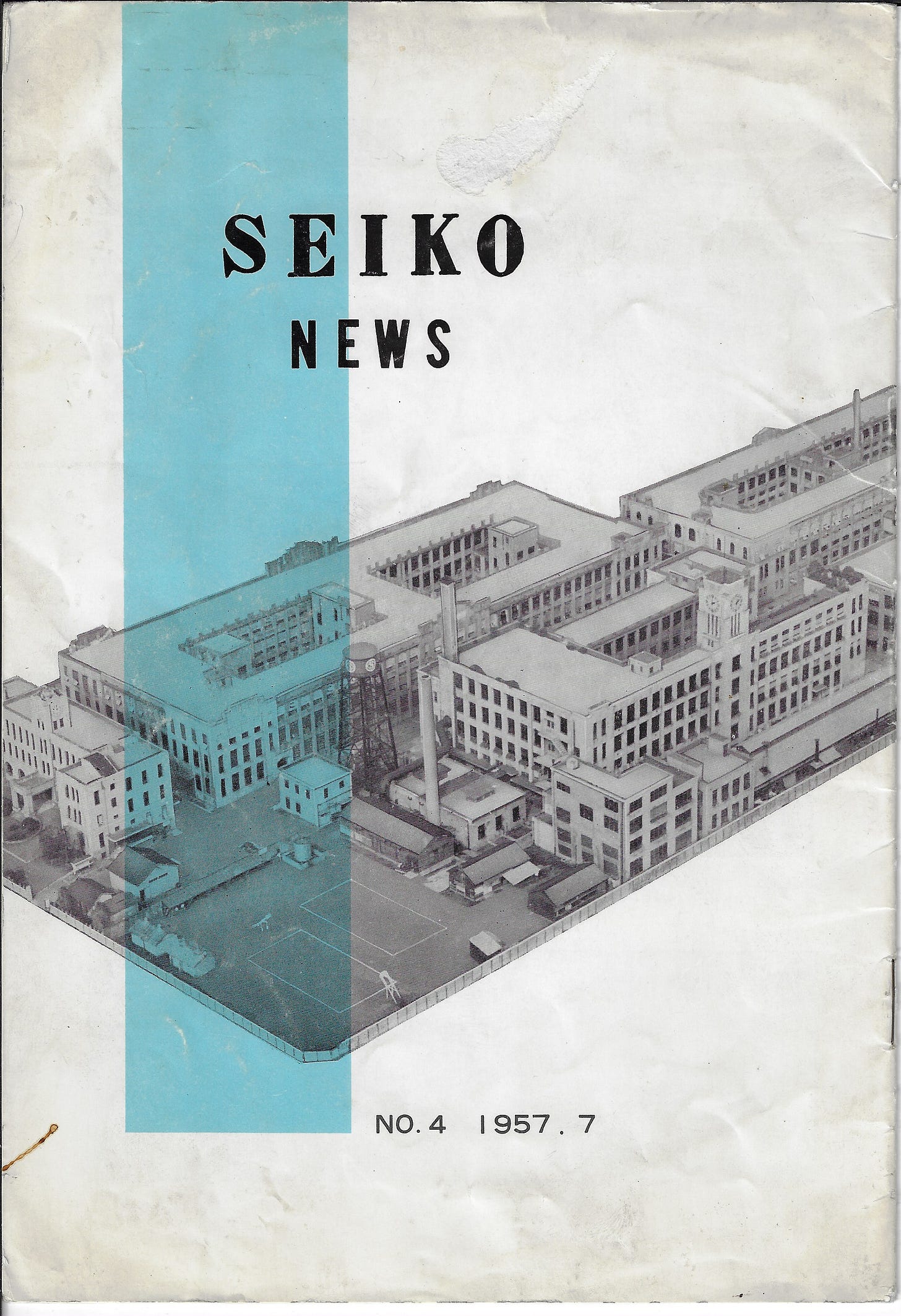
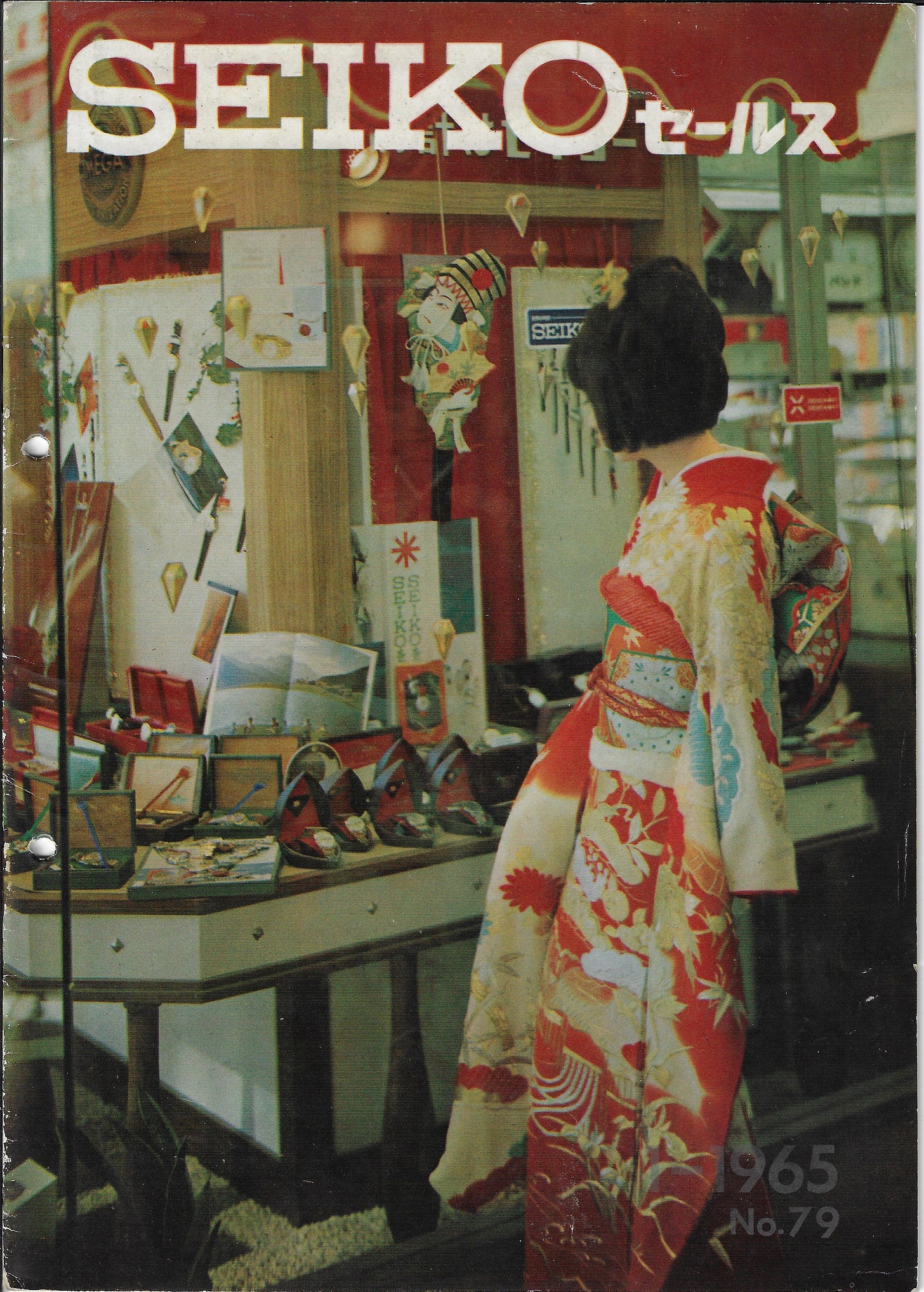
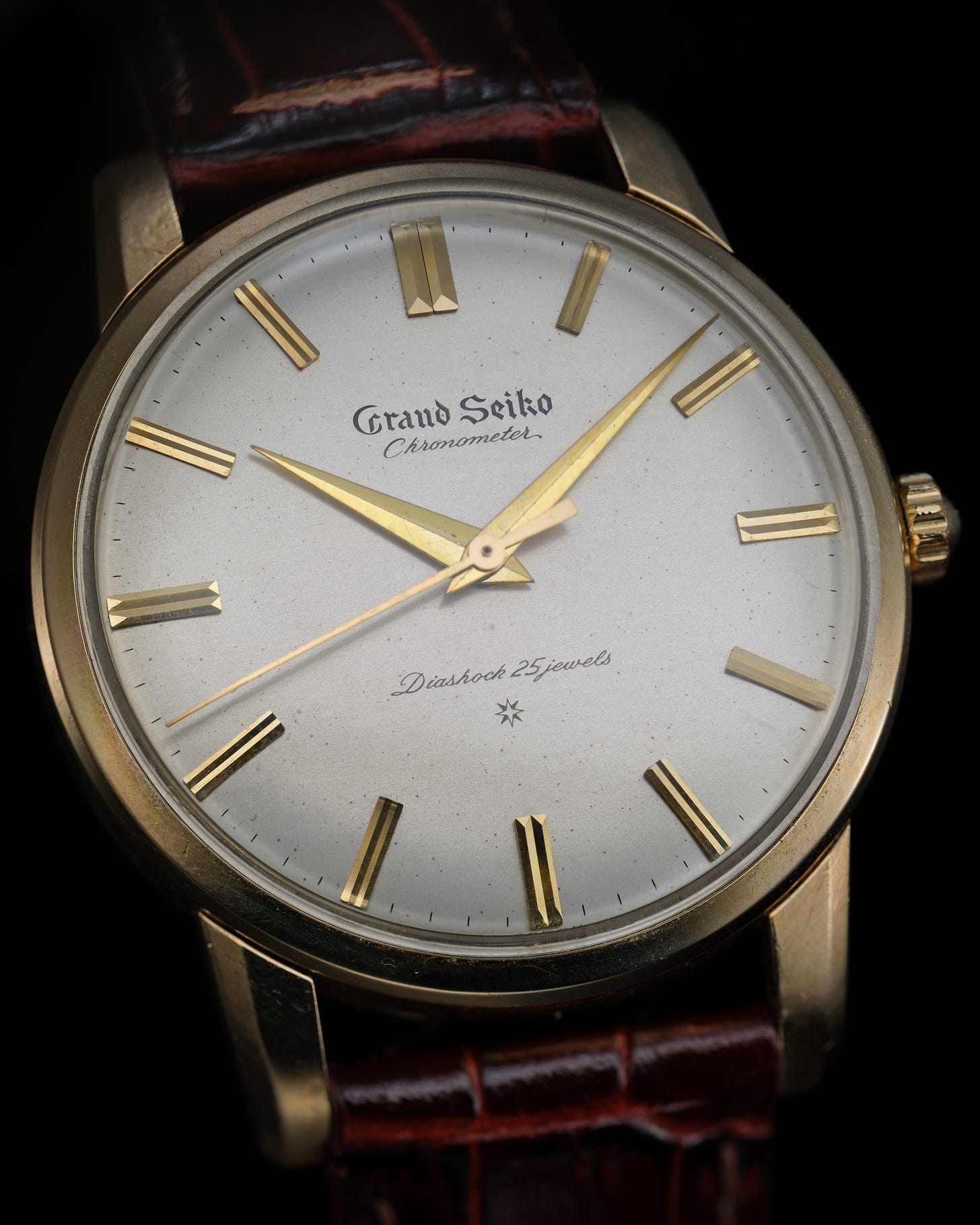
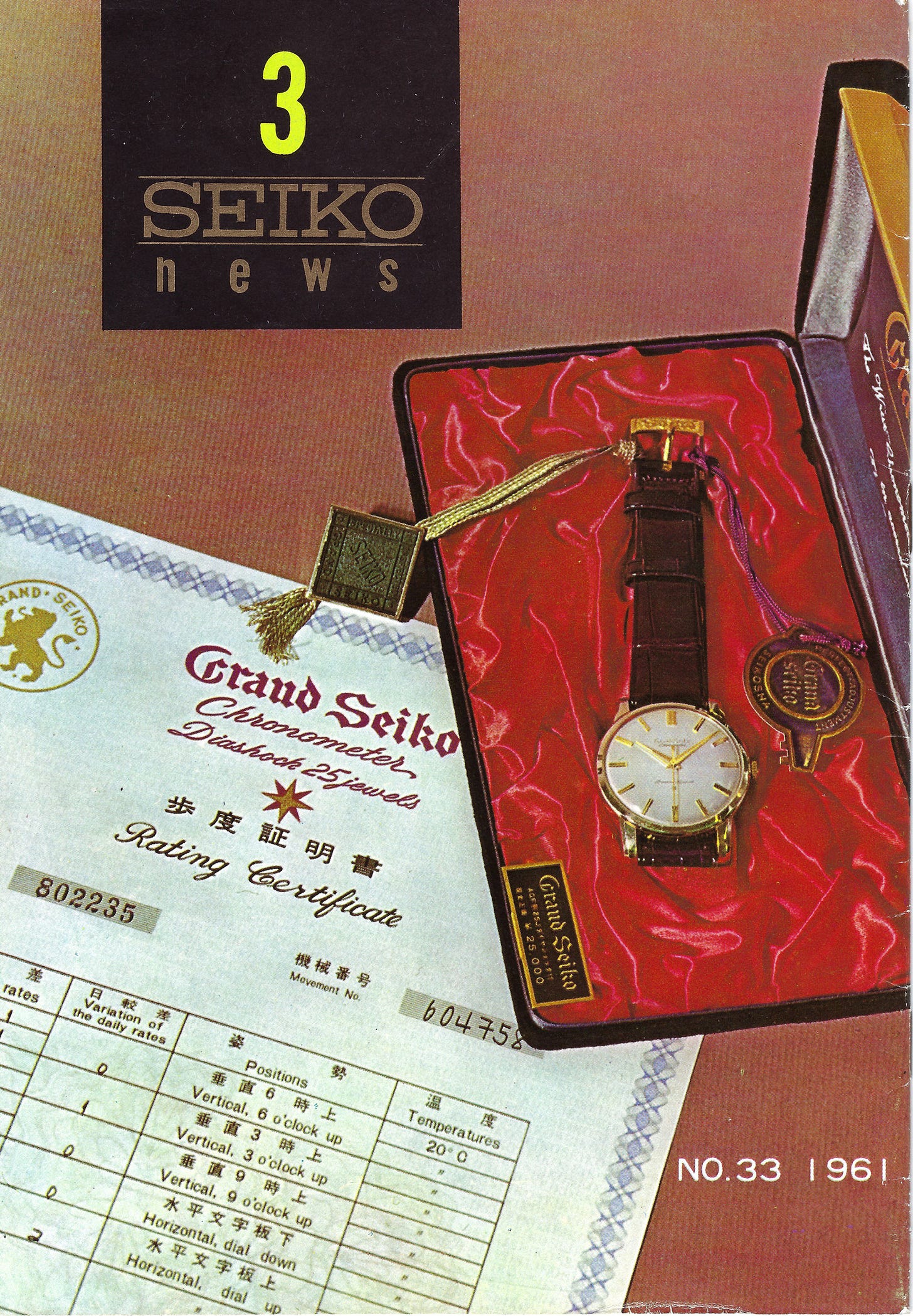
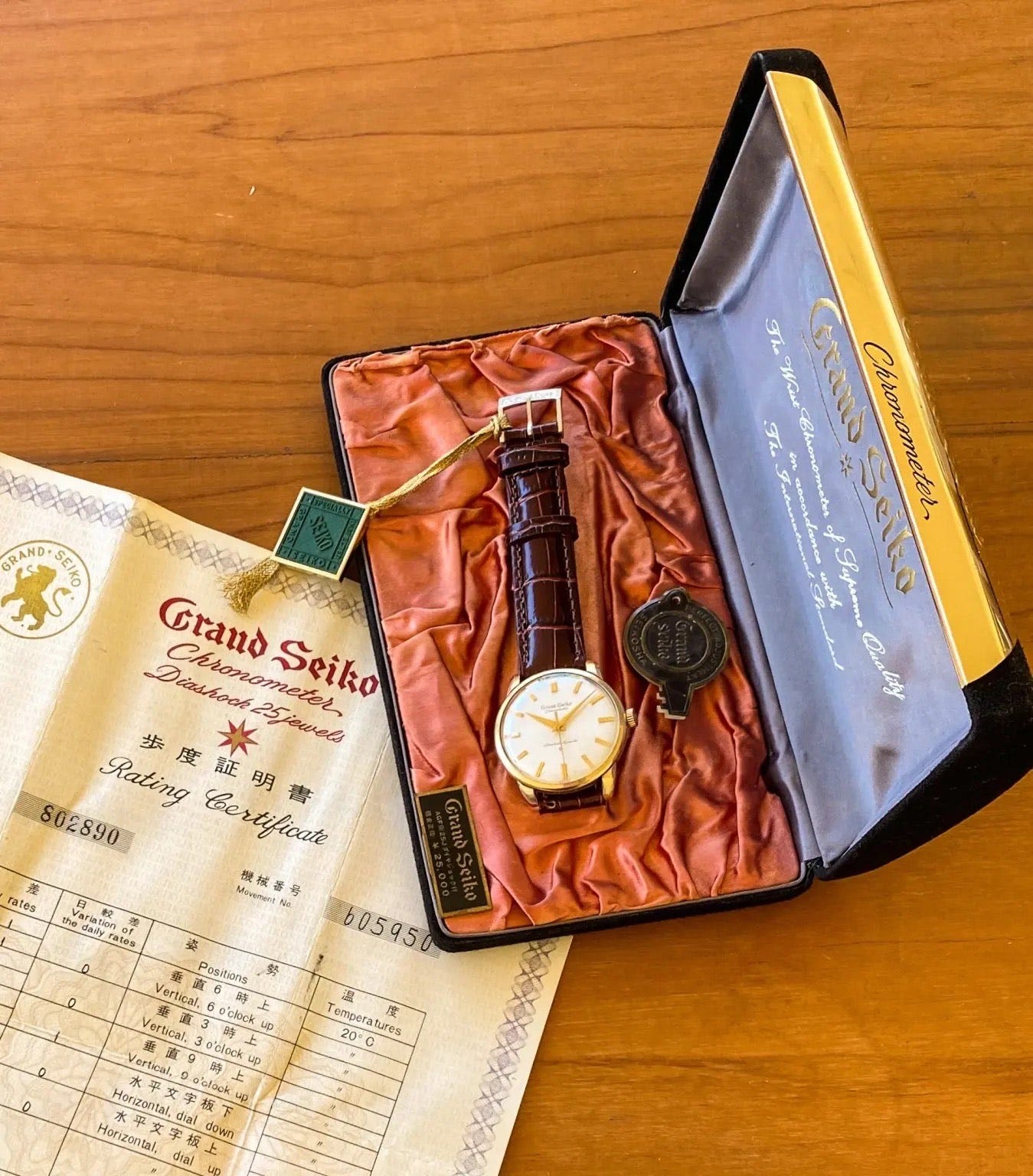
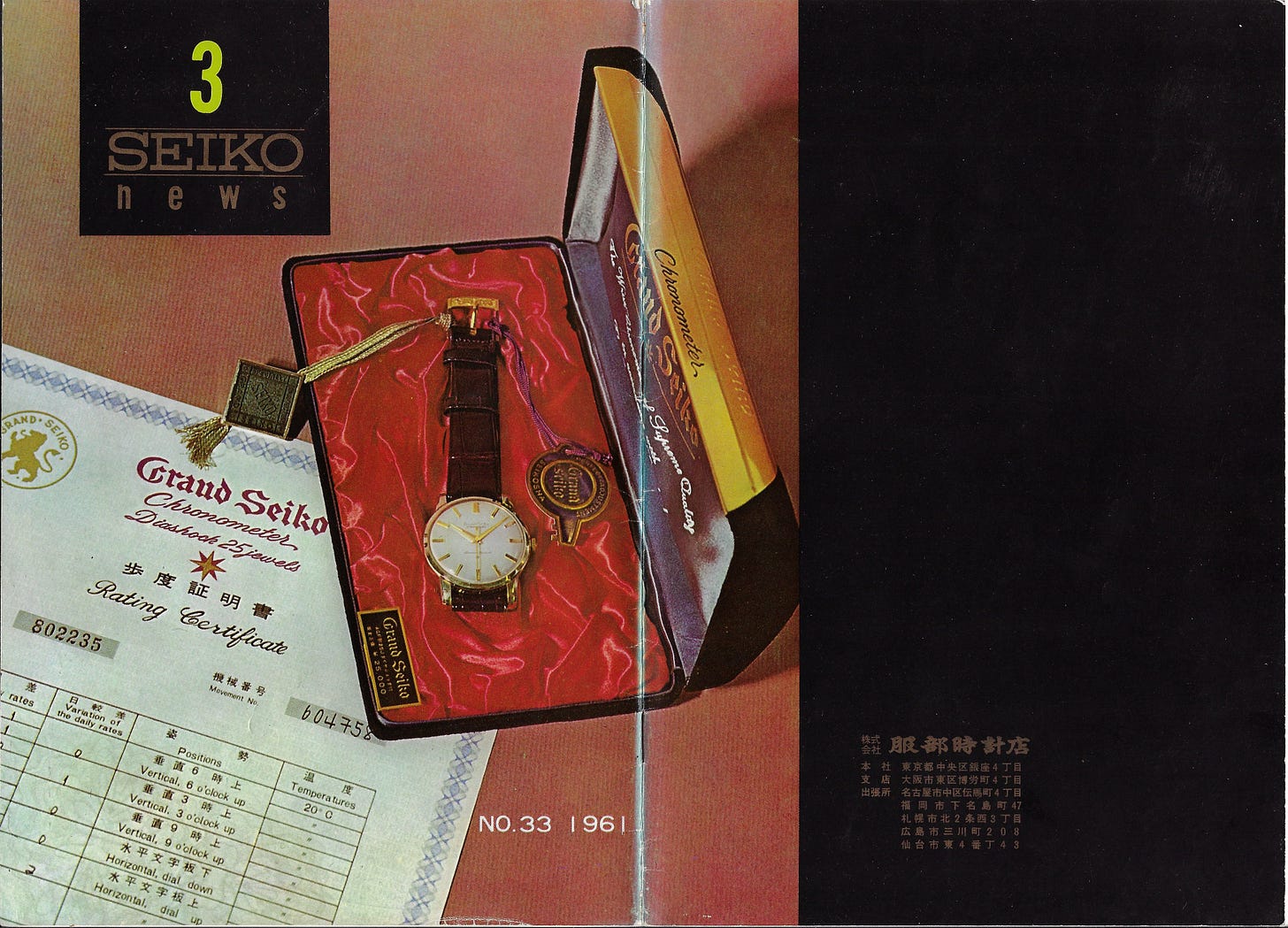
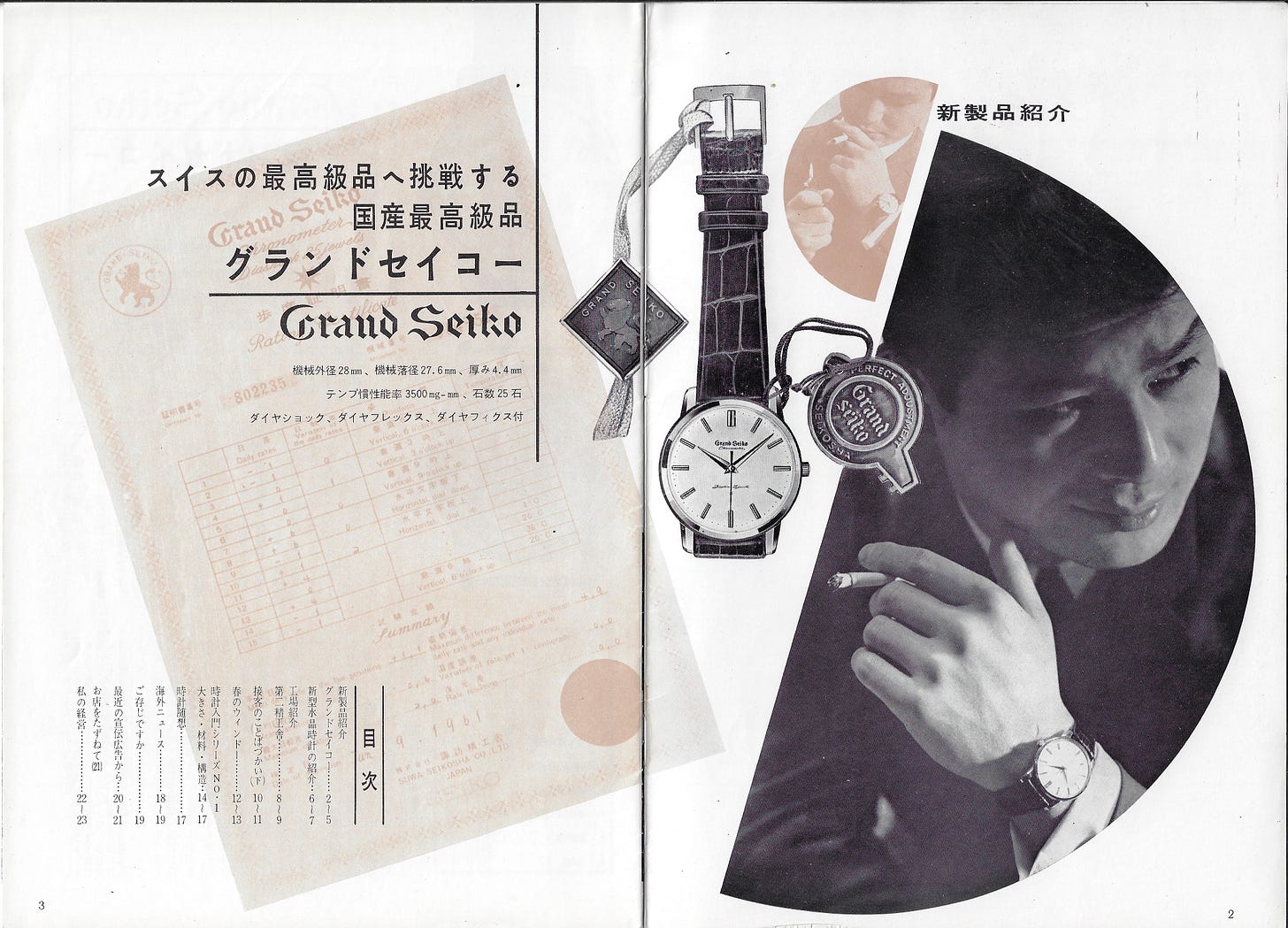


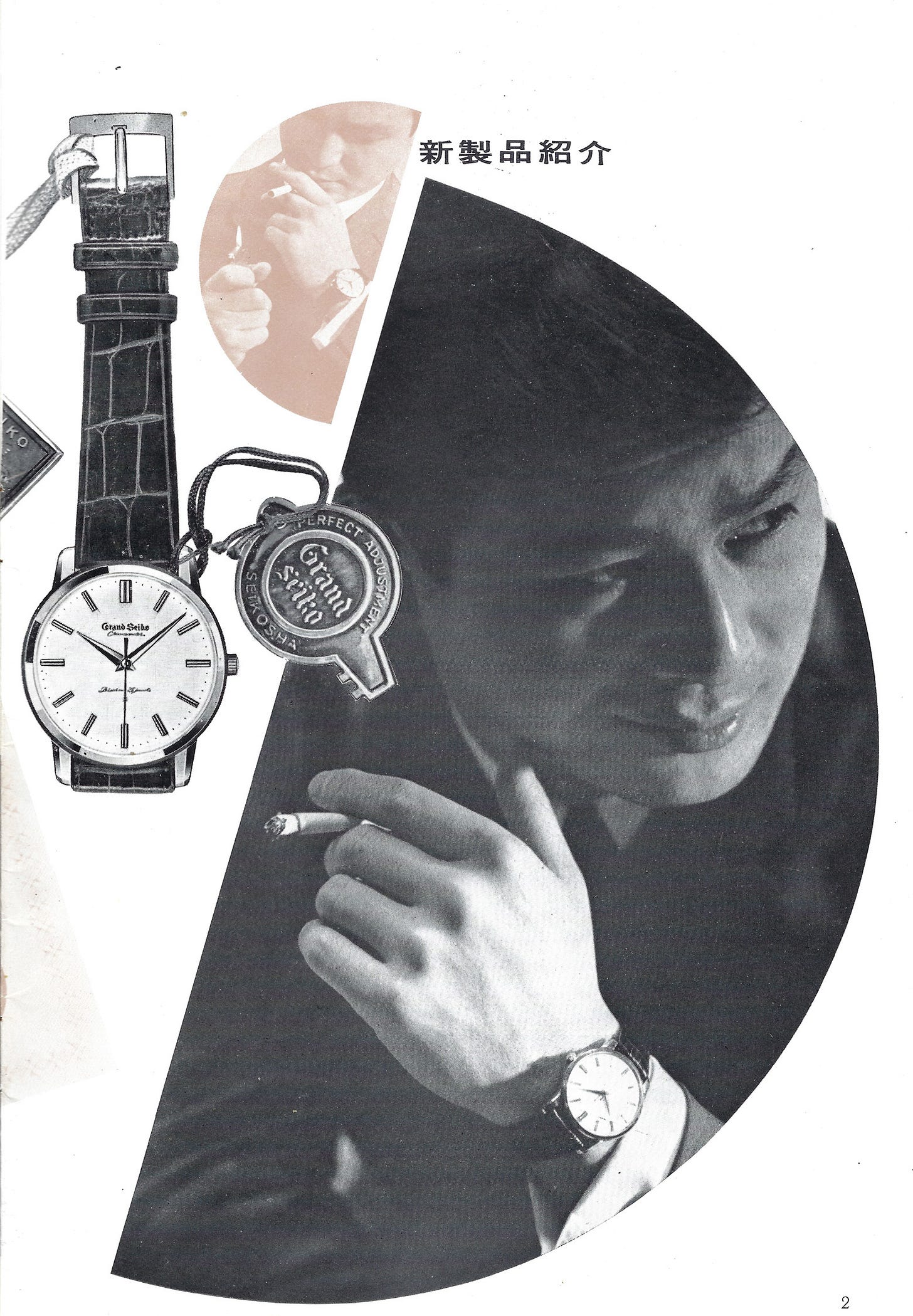
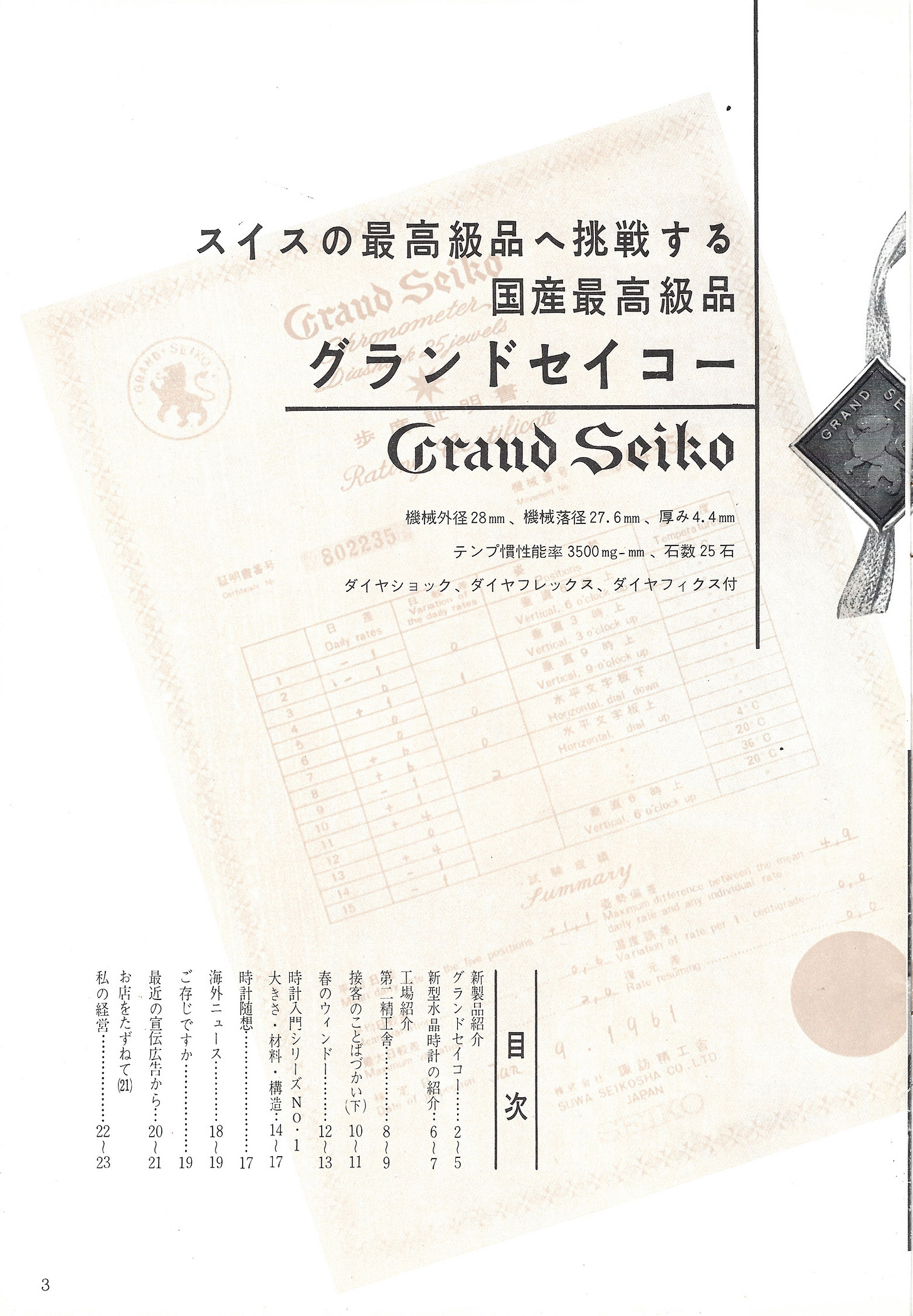


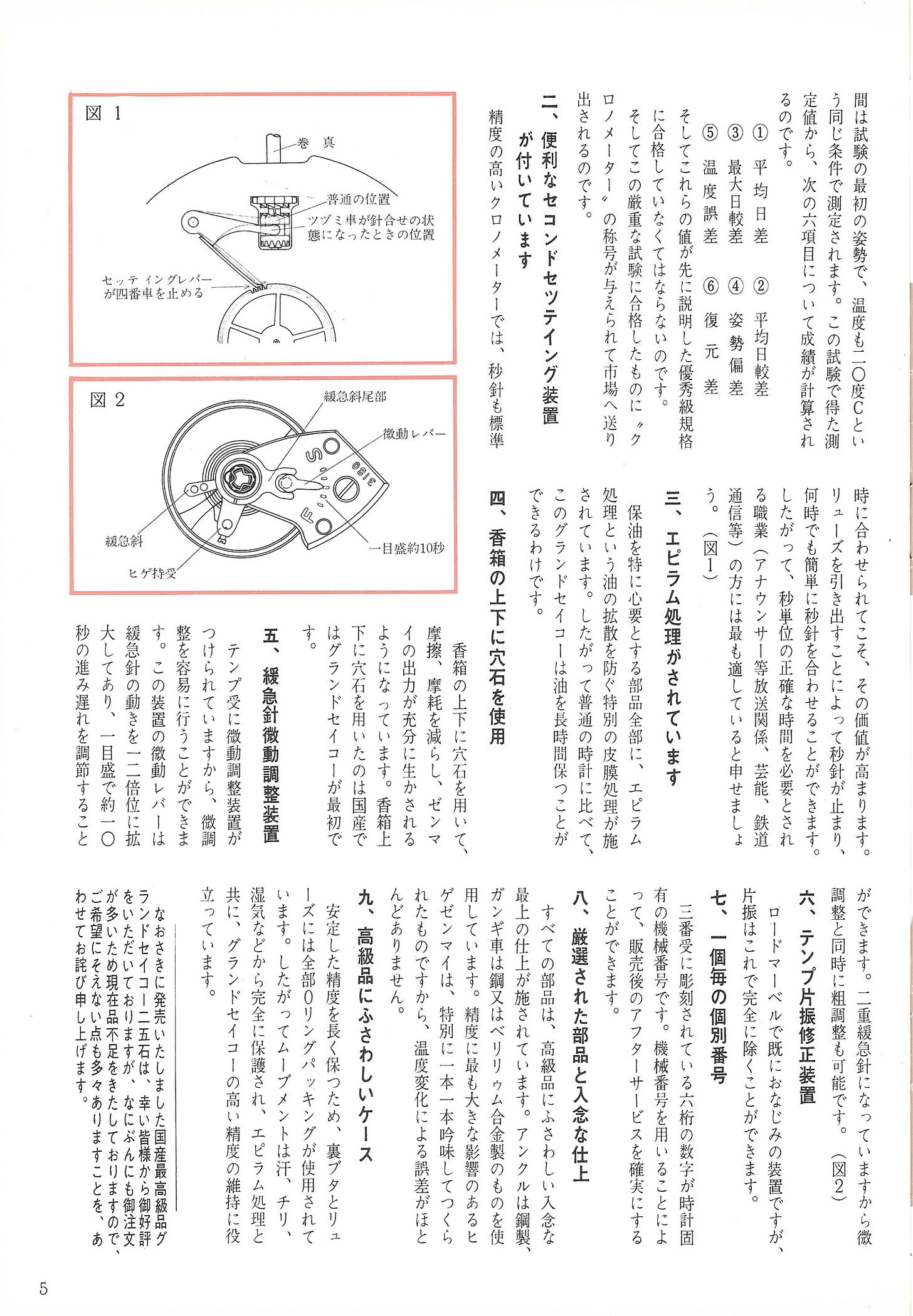
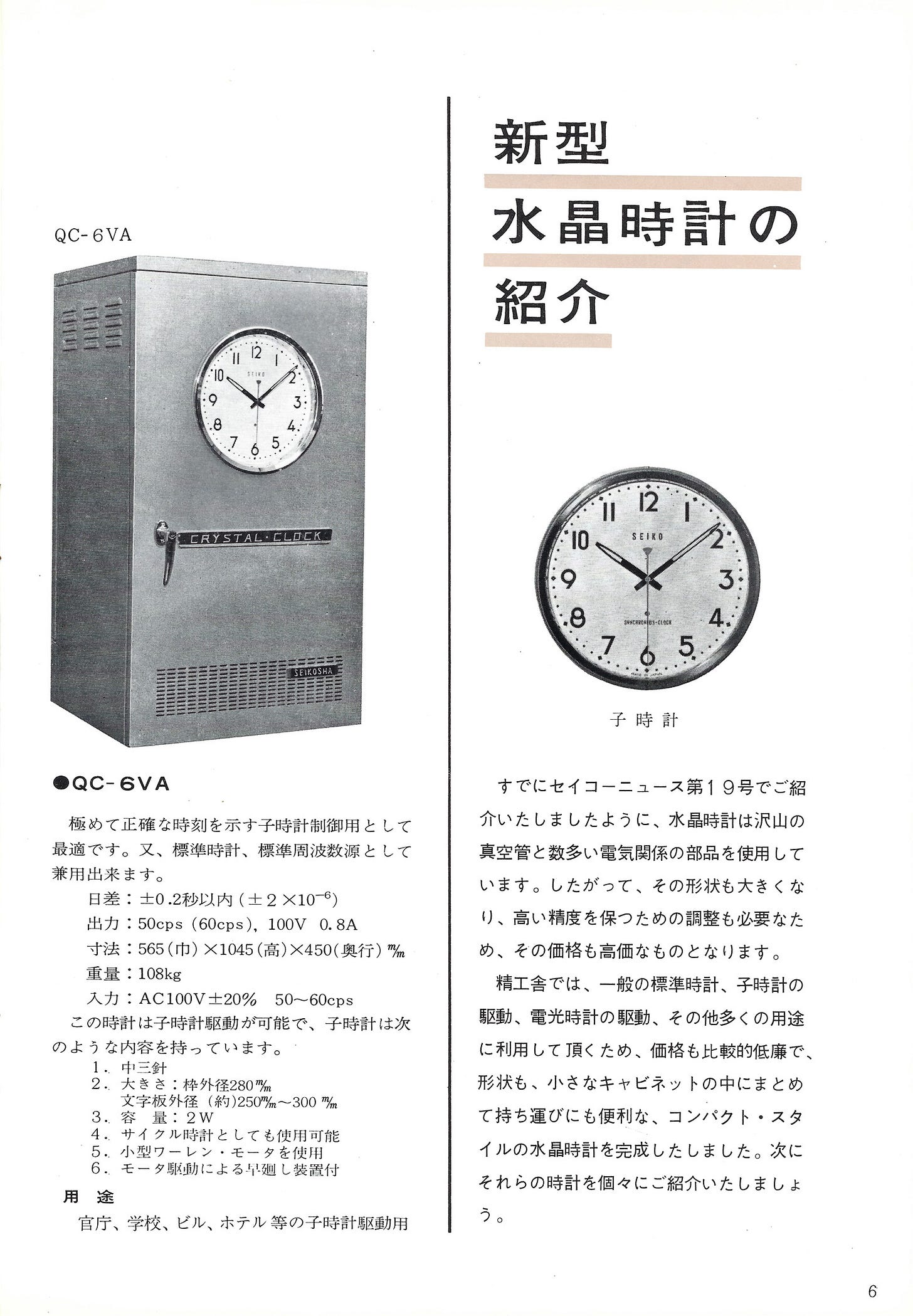
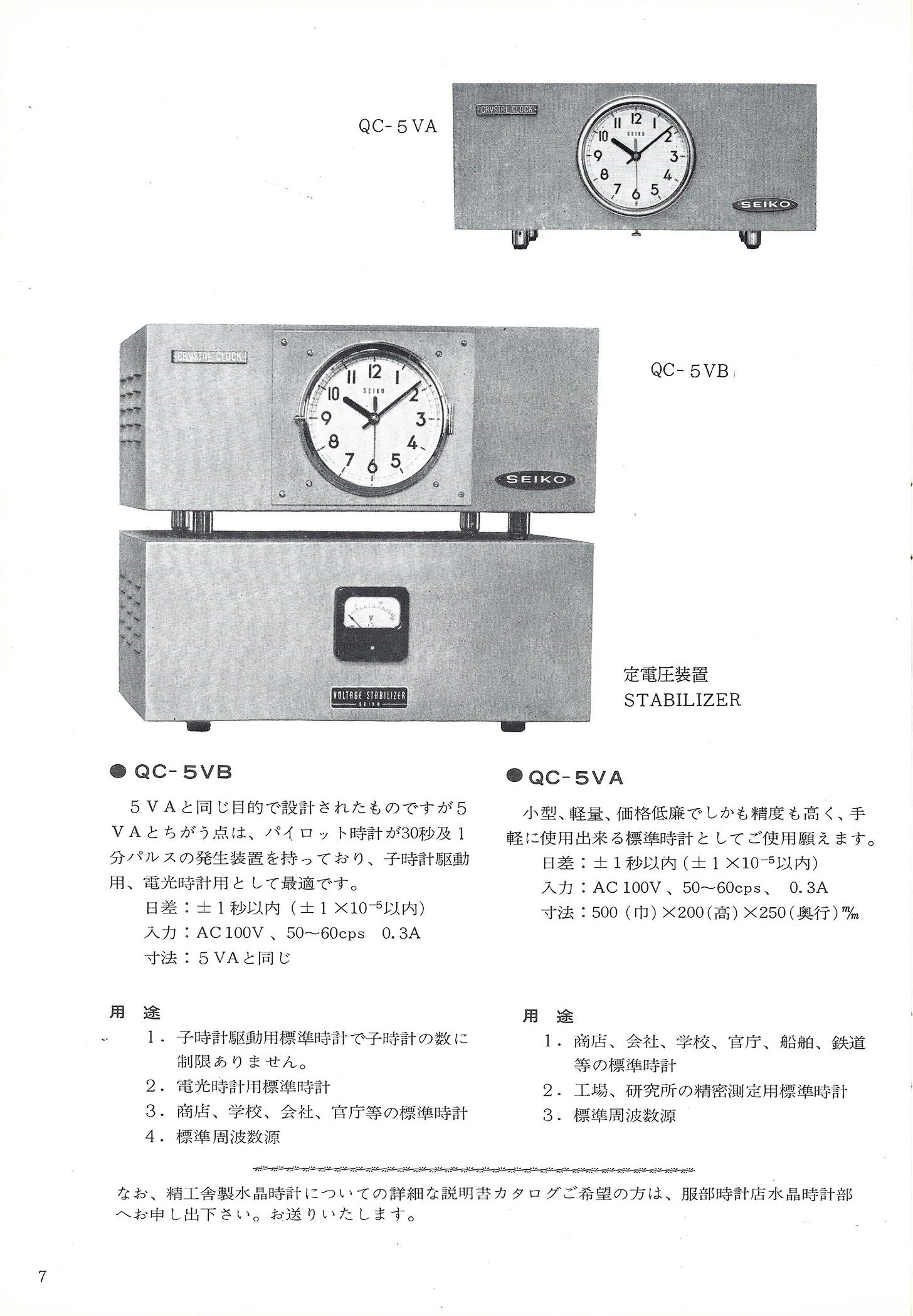

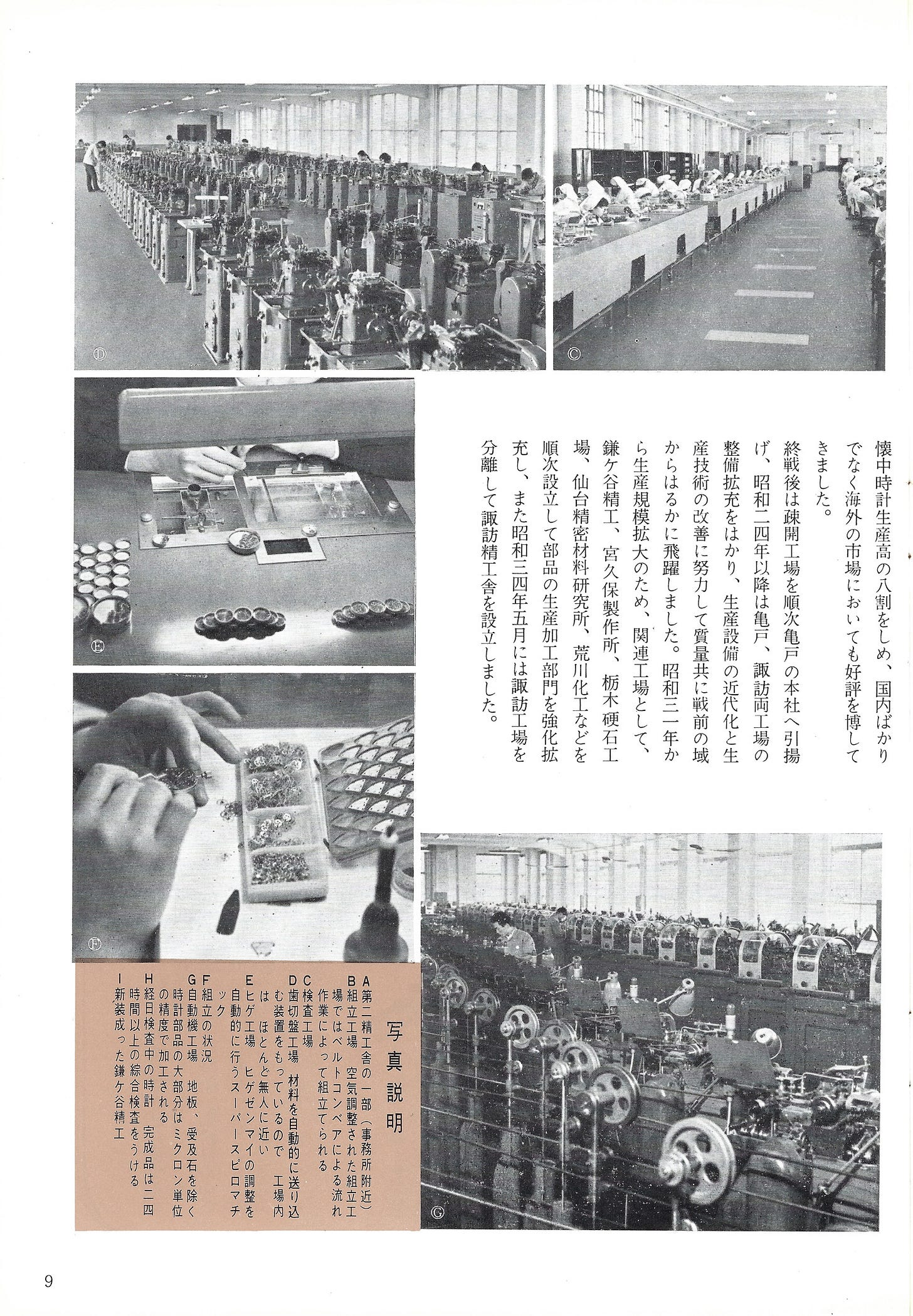
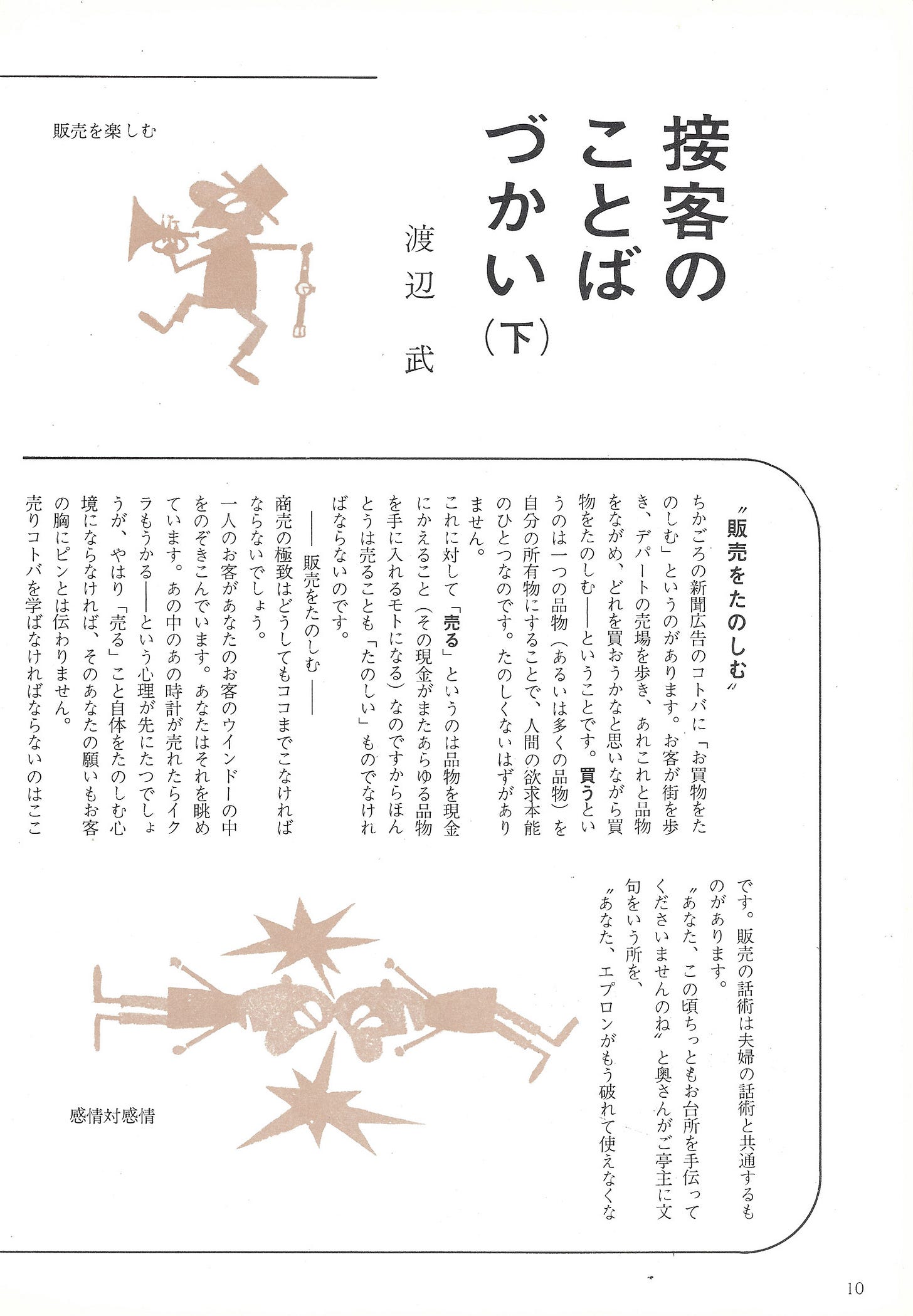
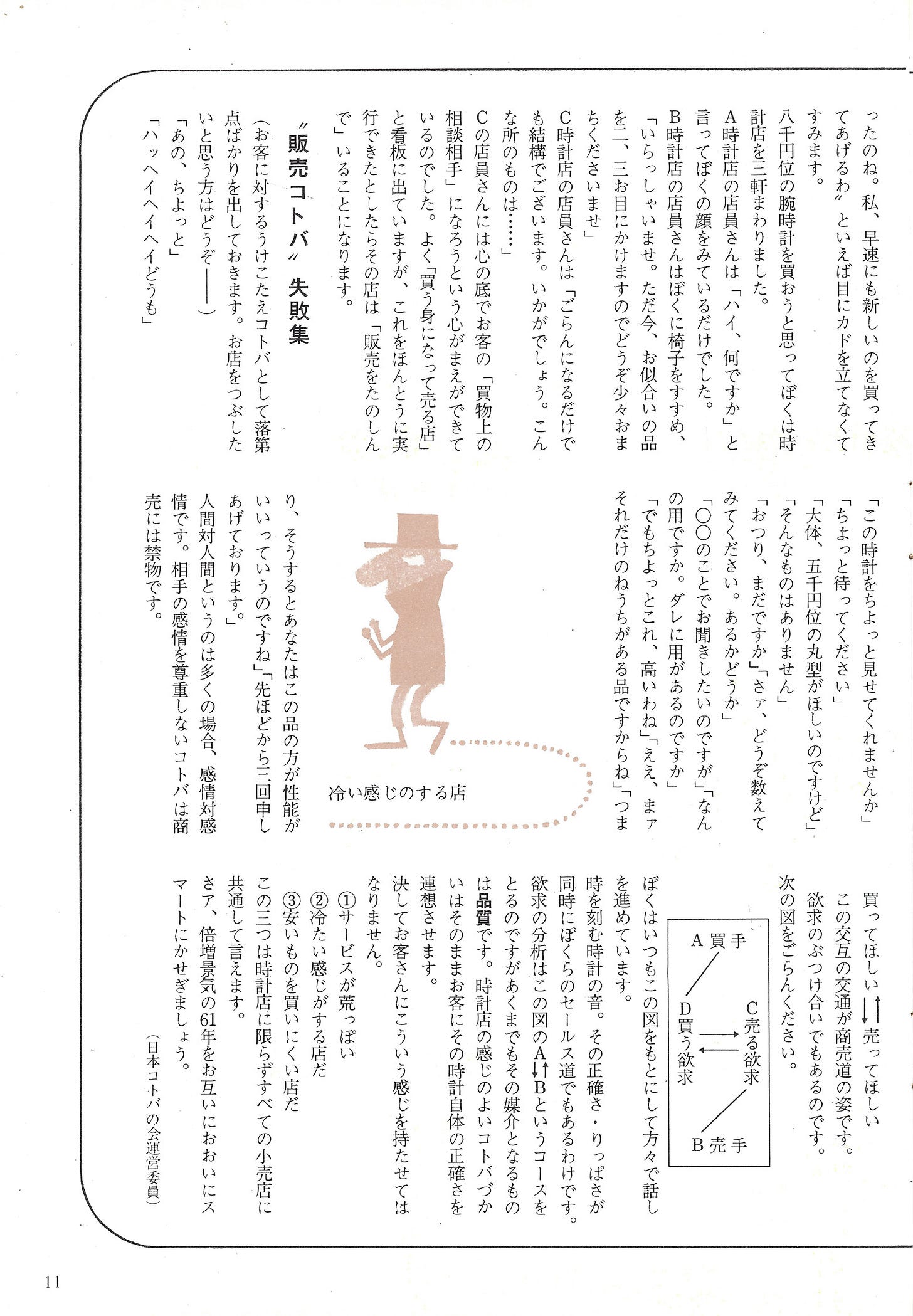
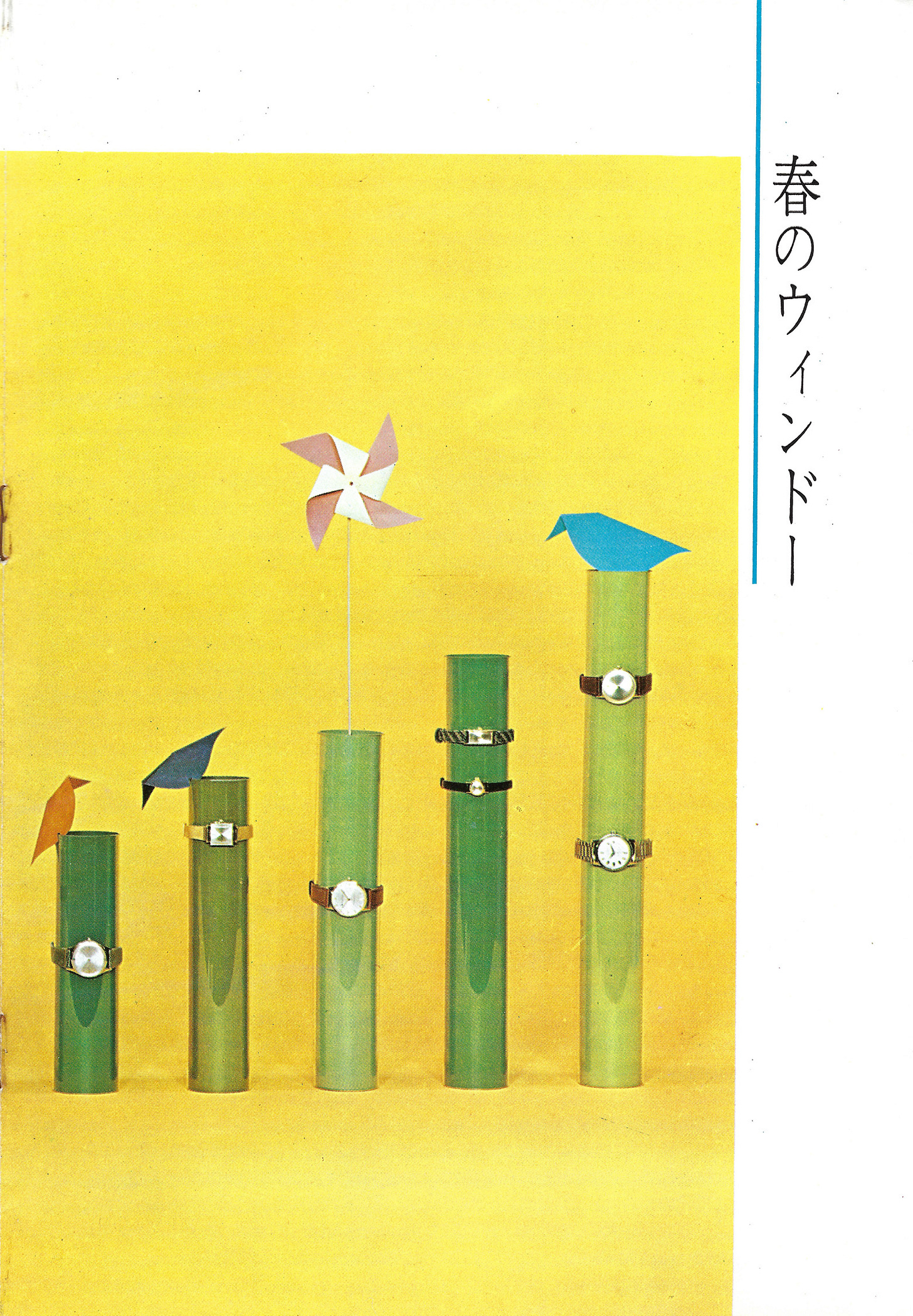
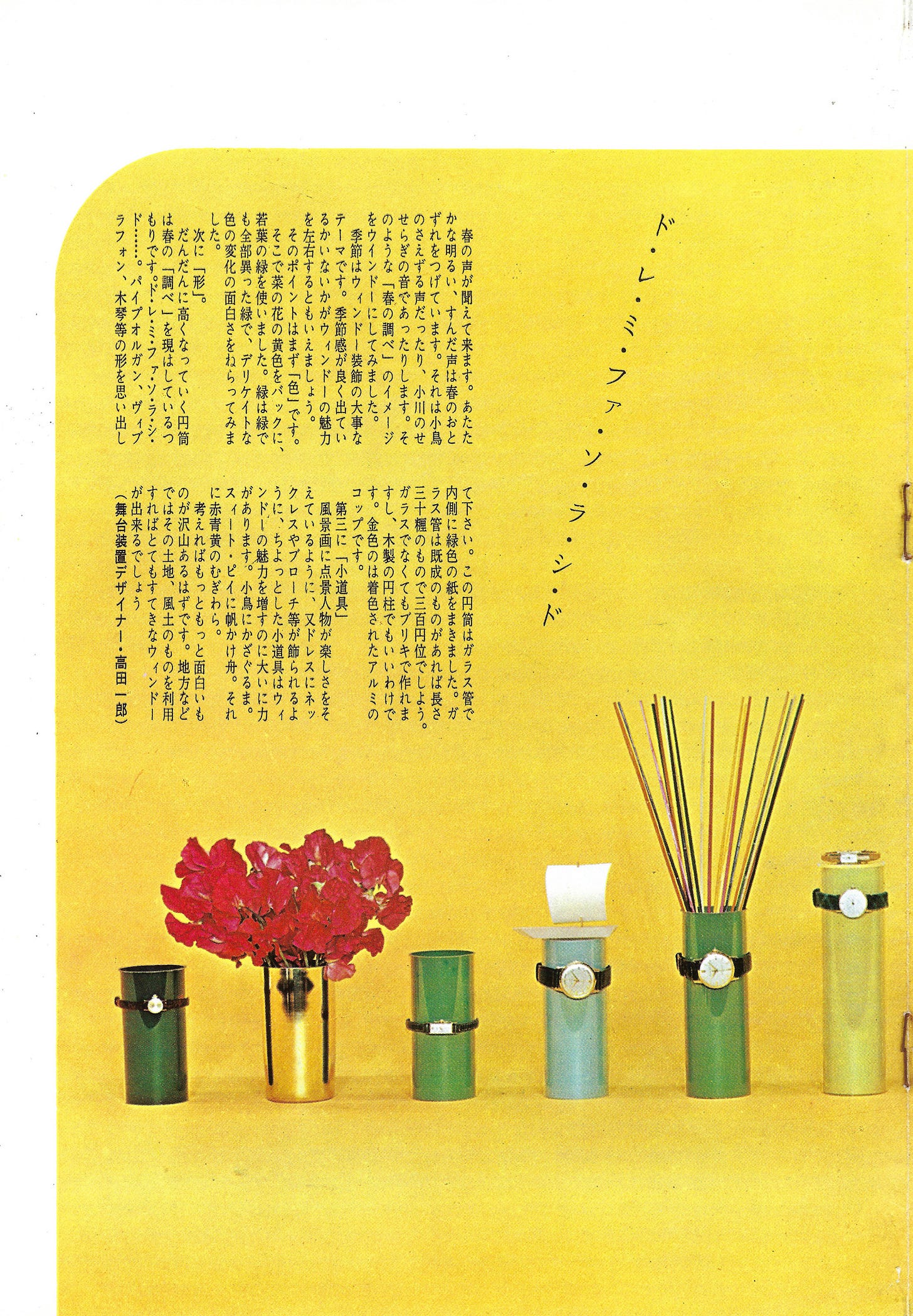

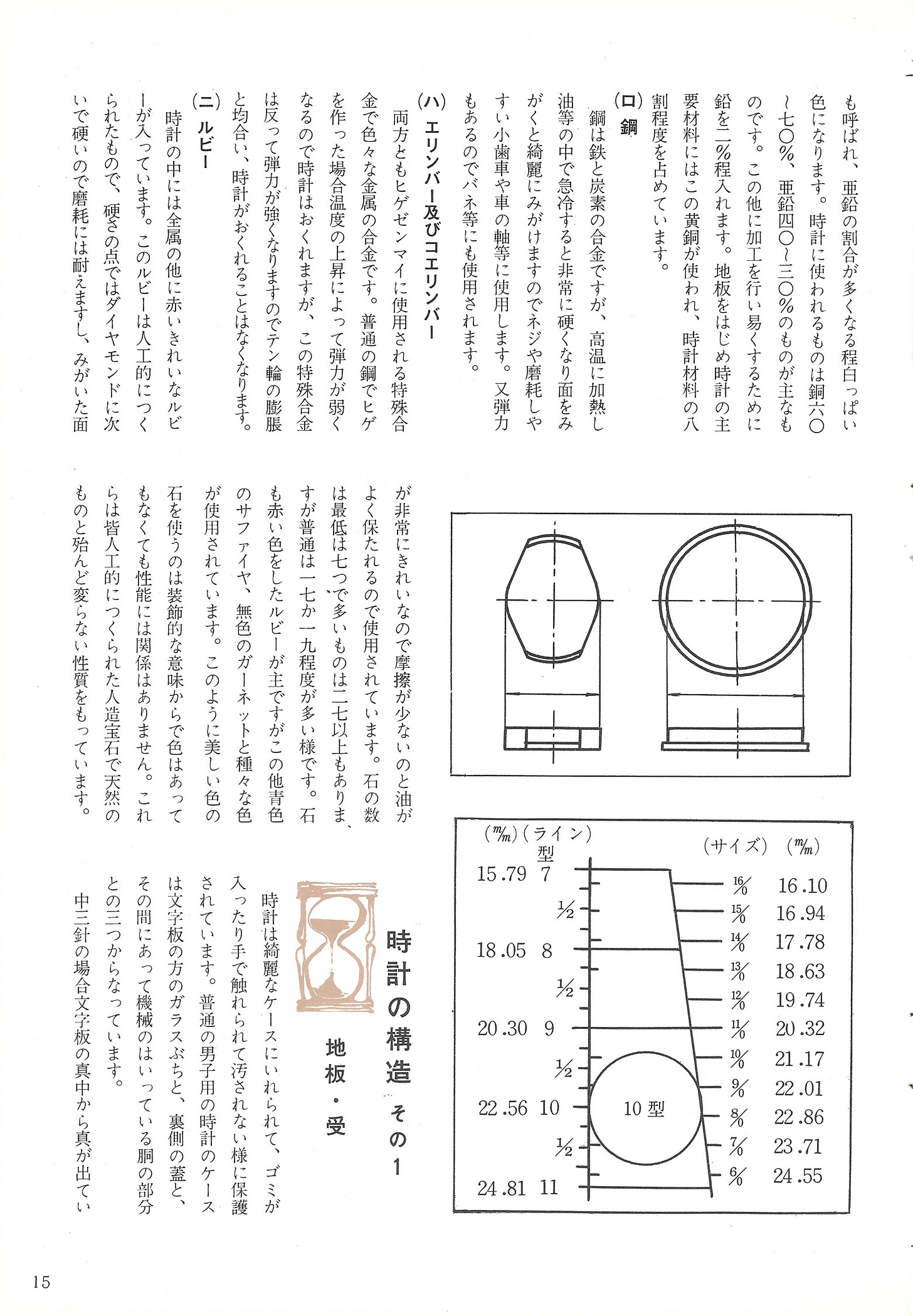
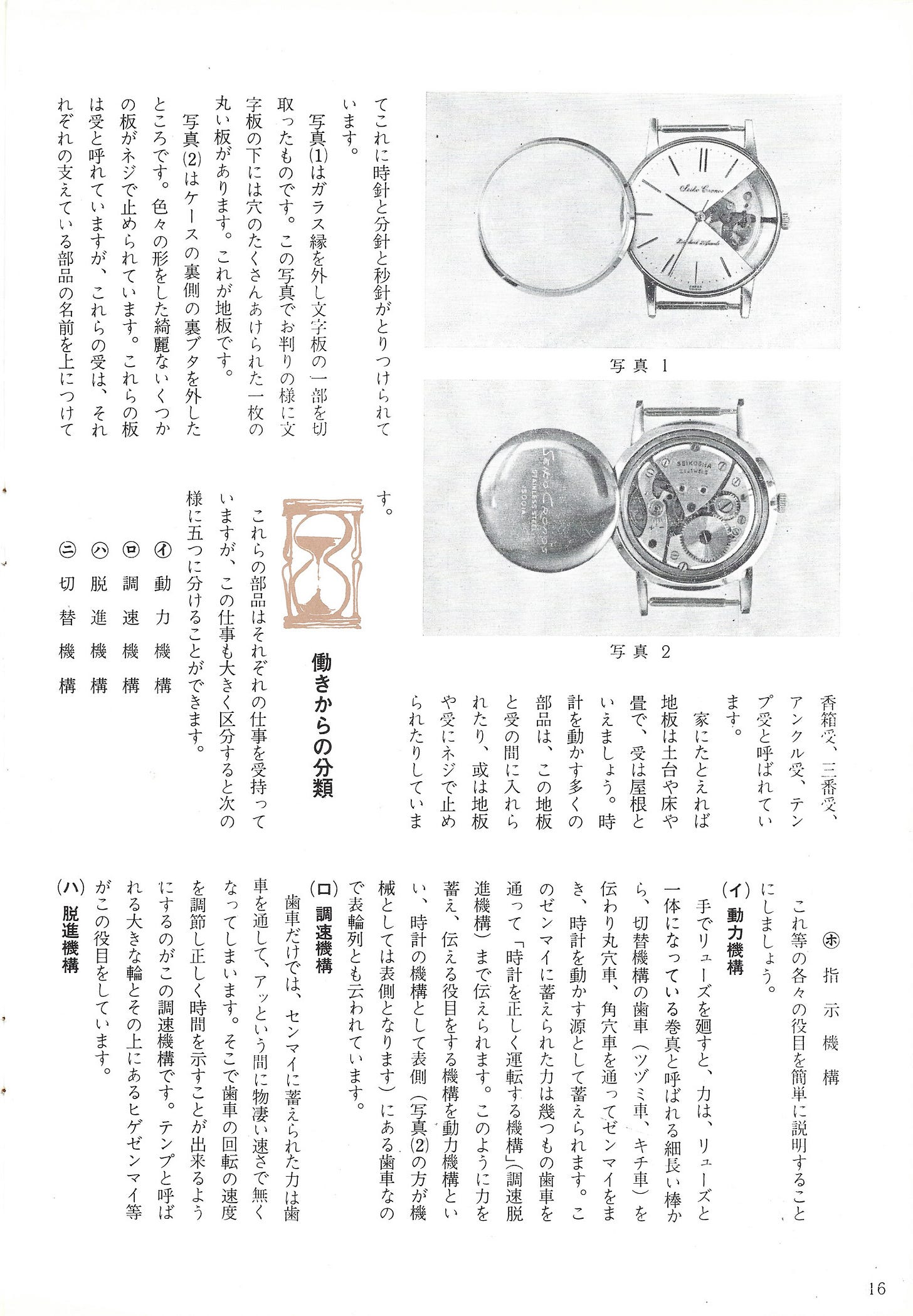
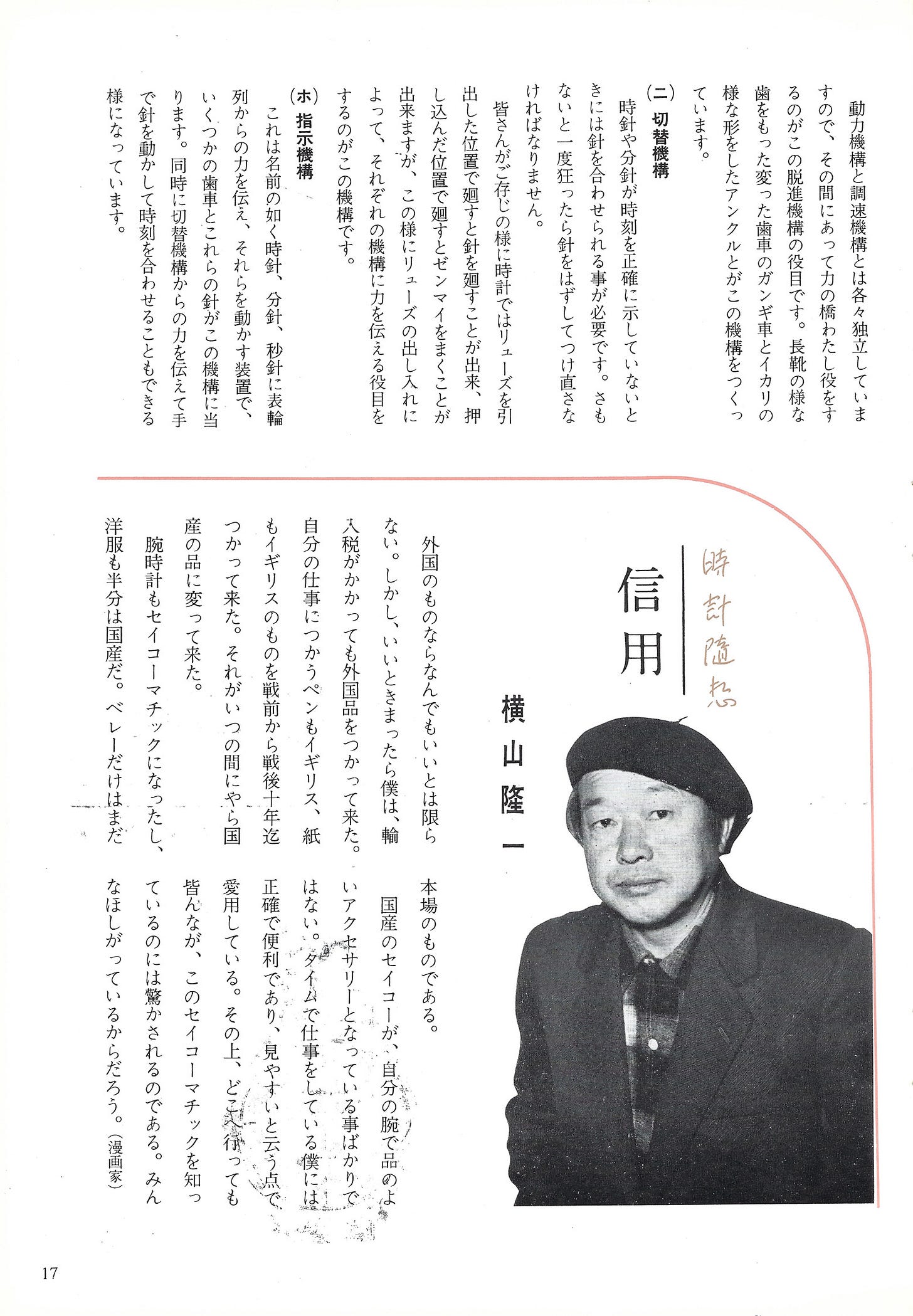

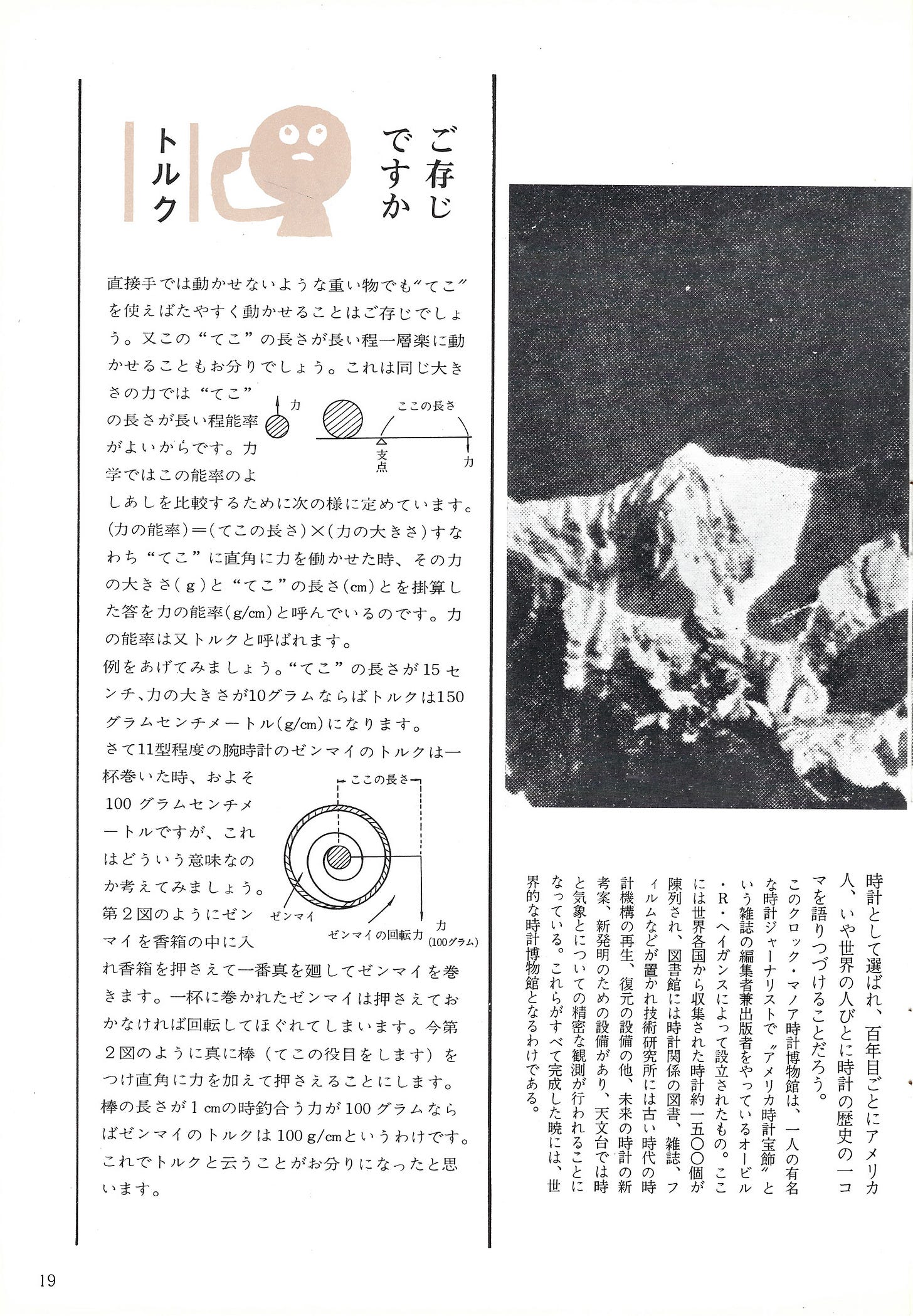
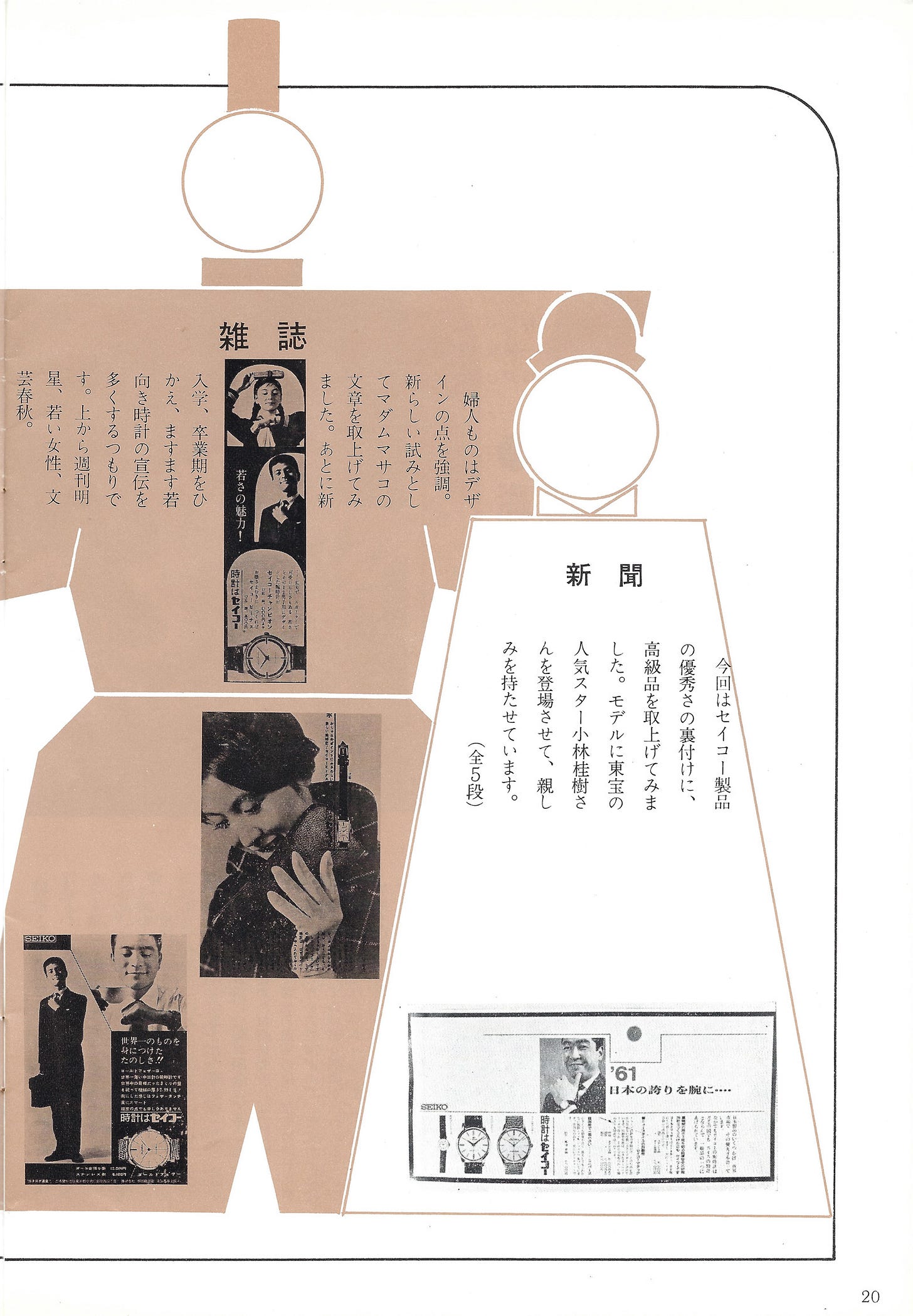
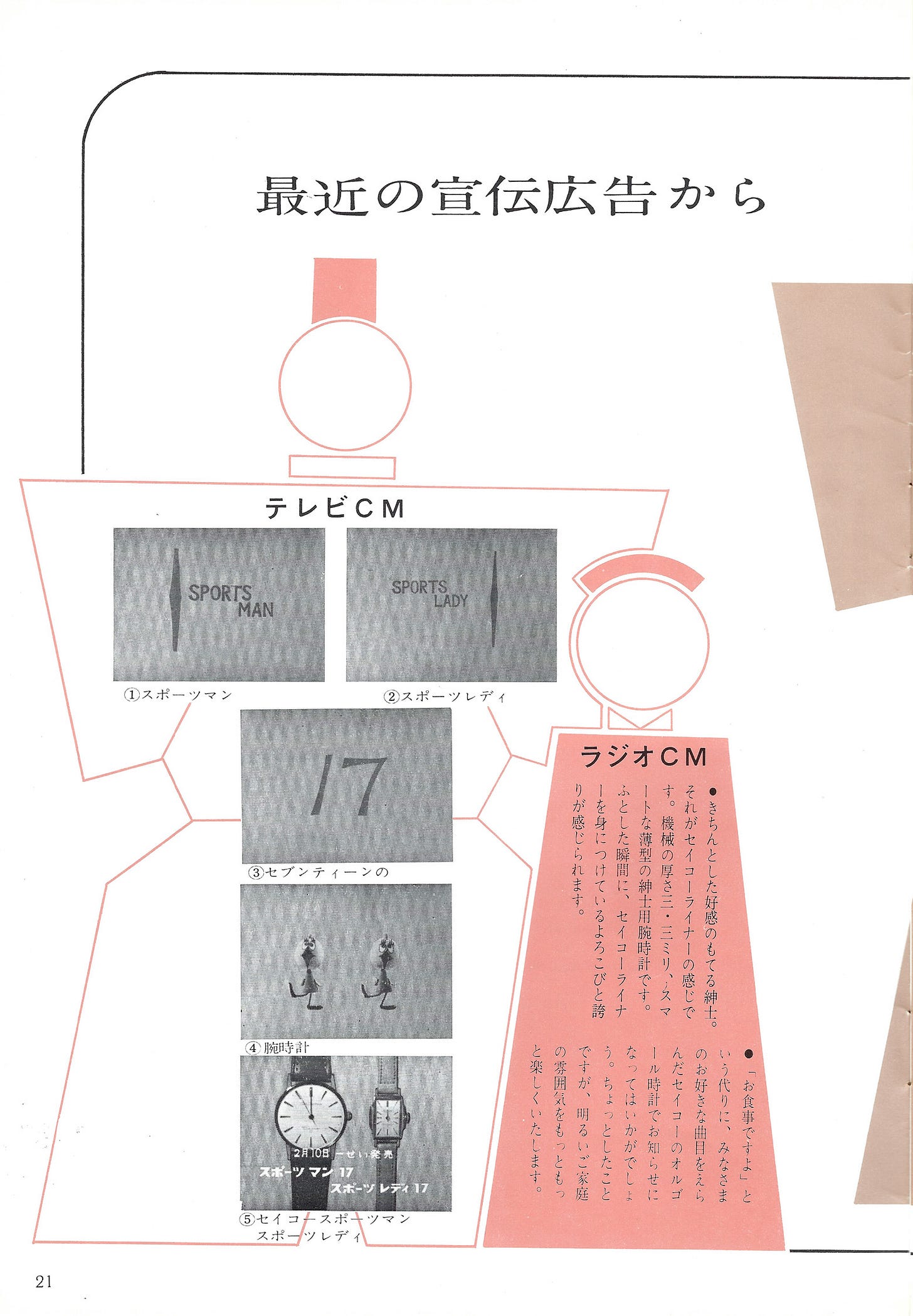
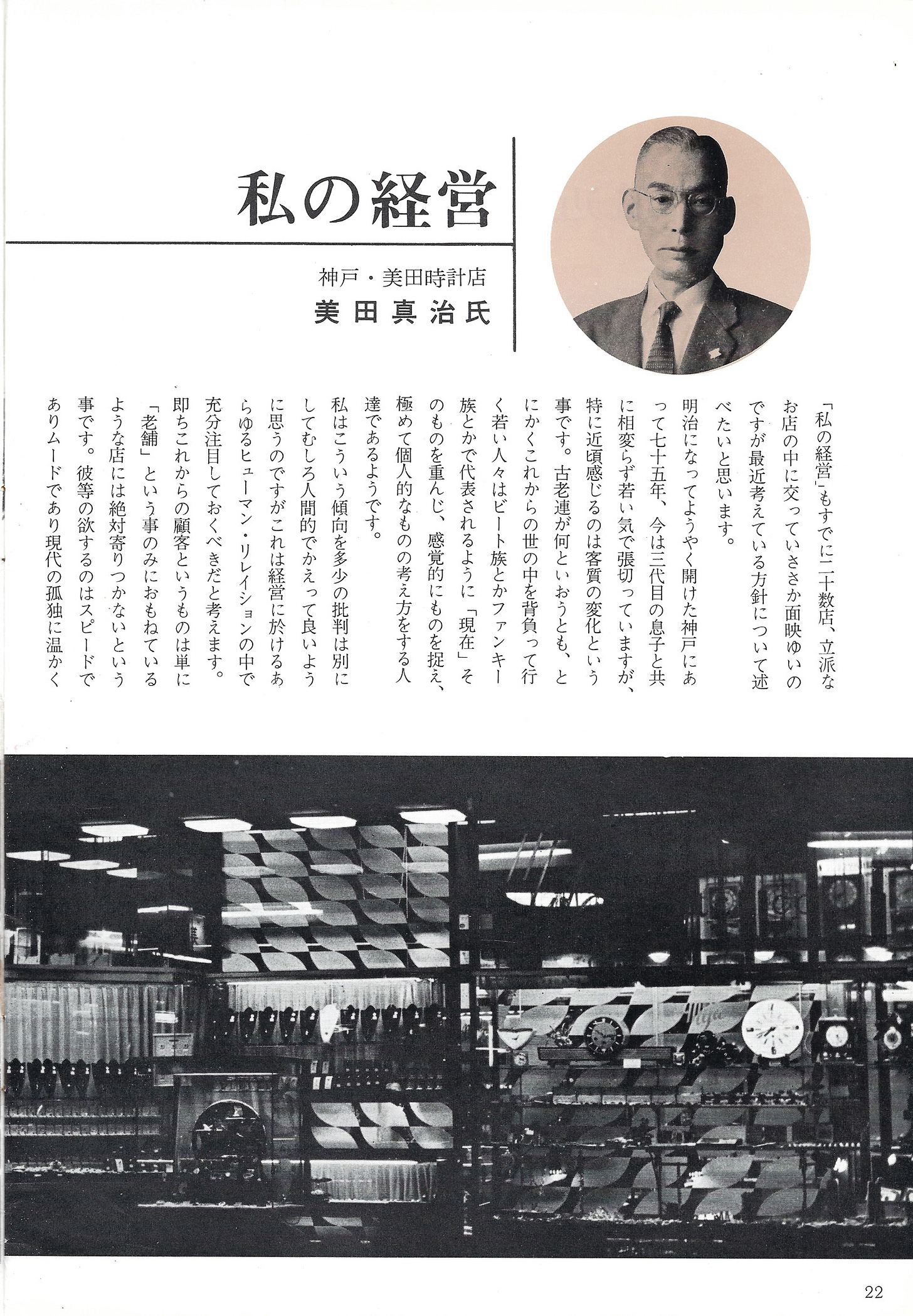
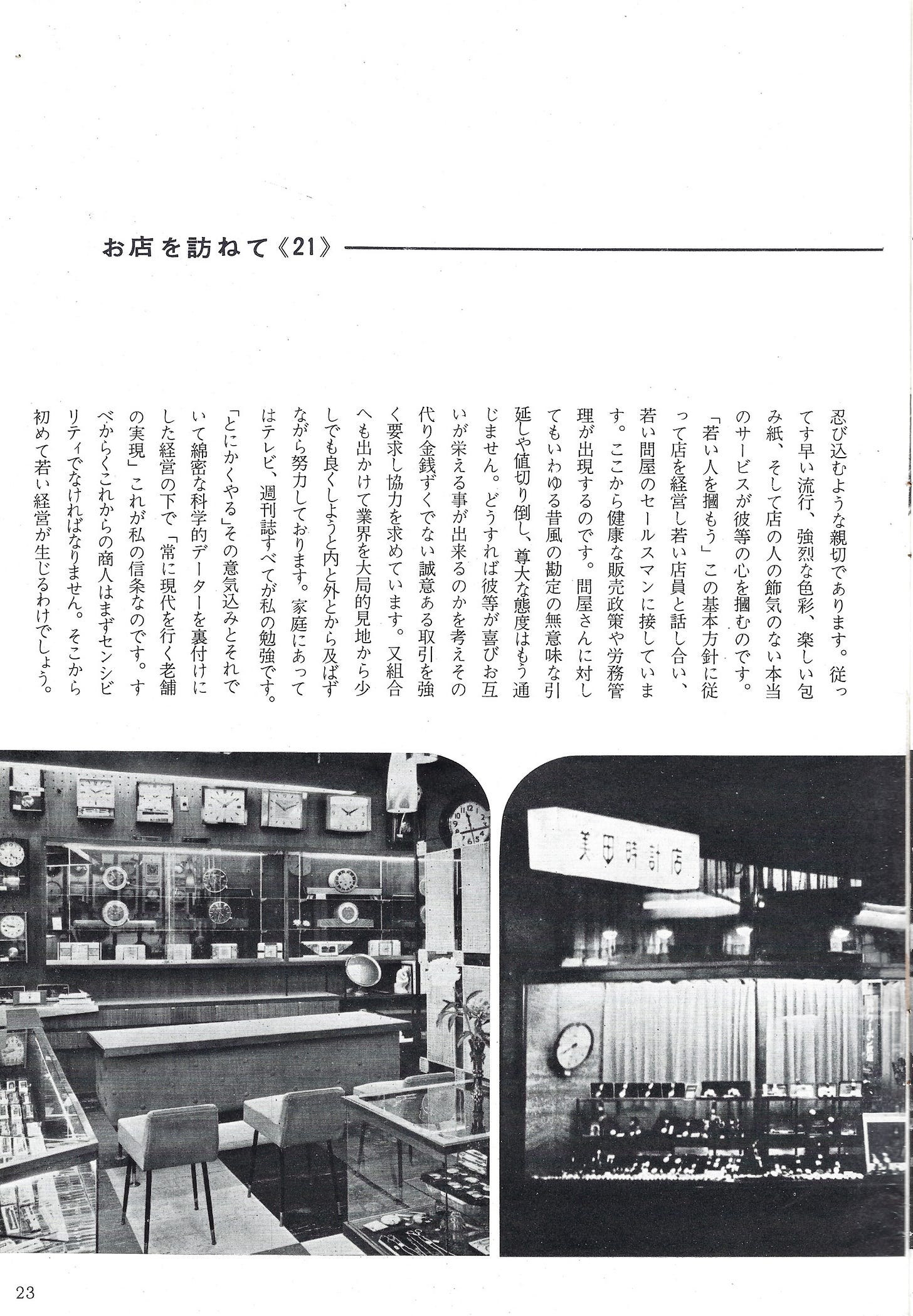
Good grief Gerald, this got to me at 2: 57 EST. Enthralling, even for a VFA only collector, never did get back to sleep.
Unputdownable